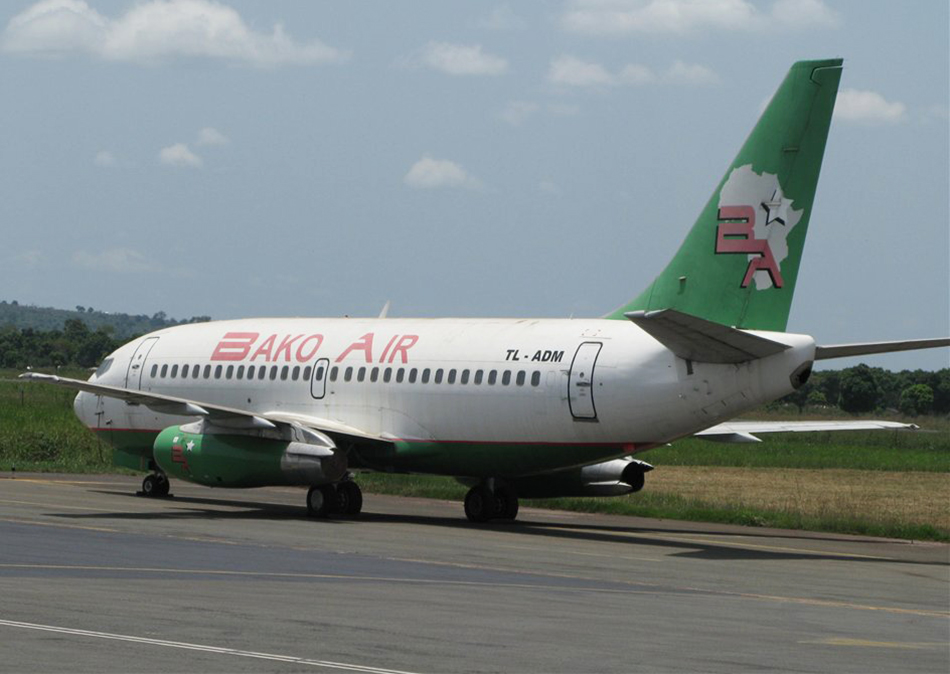Country
Crash of a Boeing 737-236 in Islamabad: 127 killed
Date & Time:
Apr 20, 2012 at 1840 LT
Registration:
AP-BKC
Survivors:
No
Schedule:
Karachi - Islamabad
MSN:
23167/1074
YOM:
1984
Flight number:
BHO213
Crew on board:
6
Crew fatalities:
Pax on board:
121
Pax fatalities:
Other fatalities:
Total fatalities:
127
Captain / Total hours on type:
2027.00
Copilot / Total hours on type:
750
Aircraft flight hours:
46933
Aircraft flight cycles:
37824
Circumstances:
On 20th April, 2012, M/s Bhoja Air Boeing 737-236A Reg # AP-BKC was scheduled to fly domestic Flight BHO-213 from Jinnah International Airport (JIAP) Karachi to Benazir Bhutto International Airport (BBIAP) Islamabad. The aircraft had 127 souls onboard including 06 flight crew members. The Mishap Aircraft (MA) took off for Islamabad at 1705 hrs Pakistan Standard Time (PST) from Karachi. The reported weather at Islamabad was thunderstorm with gusty winds. During approach for landing at BBIAP, Islamabad (OPRN), Flight BHO-213 was cleared by Islamabad Approach Radar for an Instrument Landing System (ILS) approach for Runway 30. The MA, while established on ILS (aligned with Runway 30 at prescribed altitude), at 6 miles to touchdown was asked by the Approach Radar to change over to Air Traffic Control (ATC) Tower frequency for final landing clearance. The cockpit crew came on ATC Tower frequency and flight was cleared to land at BBIAP, Islamabad, but the cockpit crew did not respond to the landing clearance call. The ATC Tower repeated the clearance but there was no response. After a few minutes, a call from a local resident was received in ATC Tower, stating that an aircraft had crashed close to Hussain Abad (A population around 4 nm short of runway 30 BBIAP, Islamabad). It was later confirmed that Flight BHO-213 had crashed and all 127 souls onboard (121 passengers + 6 flight crew) had sustained fatal injuries along with complete destruction of aircraft.
Probable cause:
Factors Leading to the Accident:
- The aircraft accident took place as a result of combination of various factors which directly and indirectly contributed towards the causation of accident. The primary causes of accident include, ineffective management of the basic flight parameters such as airspeed, altitude, descent rate attitude, as well as thrust management. The contributory factors include the crew’s decision to continue the flight through significant changing winds associated with the prevailing weather conditions and the lack of experience of the crew to the airplane’s automated flight deck.
- The reasons of ineffective management of the automated flight deck also include Bhoja Air’s incorrect induction of cockpit crew having experience of semi automated aircraft, inadequate cockpit crew simulator training and absence of organizational cockpit crew professional competence and monitoring system.
- The incorrect decision to continue for the destination and not diverting to the alternate aerodrome despite the presence of squall line and very small gaps observed by the Captain between the active weather cells is also considered a contributory factor in causation of the accident.
- The operator’s Ops Manual (CAA Pakistan approved) clearly states to avoid active weather cells by 5 to 10 nm which was violated by the cockpit crew is also considered a contributory factor in causation of the accident.
- FO possessed average professional competence level and was due for his six monthly recurrent simulator training for Boeing 737-200 aircraft (equipped with a semi-automated flight deck). Bhoja Air requested an extension for his recurrent simulator training on 07th March, 2012. As per the existing laid down procedures of CAA Pakistan, two months extension was granted for recurrent simulator training on 09th March, 2012. The extension was granted for Boeing 737-200 aircraft, whereas the newly inducted Boeing 737-236A aircraft was equipped with automated flight deck. It is important to note that Bhoja Air did not know this vital piece of information till their cockpit crew went for simulator training to South Africa. This critical information regarding automation of the newly inducted Boeing 737-236A was not available with Flight Standard Directorate CAA, Pakistan as the information was not provided by the Bhoja Air Management.
- Therefore it is observed that due to the ignorance of Bhoja Air Management and CAA Pakistan, the said extension in respect of FO for simulator training was initially requested by former and subsequently approved by the latter. This resulted in absence of variance type training conformance of FO because of which he did not contribute positively in recovering the aircraft out of unsafe set of conditions primarily due to lack of automation knowledge, proper training and relying on captain to take remedial actions. This is also considered as one of the contributory factors in causation of accident.
- The Captain’s airline flying experience on semi automated flight deck aircraft and his selection for automated aircraft without subsequent training and monitoring to enhance his professional competence and skill, is one of the factors in causation of the accident.
- None of the cockpit crew member challenged the decision of each other to continue for the destination despite violation of Ops Manual instructions which is against the essence of CRM training.
- After experiencing the extremely adverse weather conditions, the cockpit crew neither knew nor carried out the Boeing recommended QRH and FCOM / Ops Manual procedures to handle the abnormal set of conditions / situations due to non availability of customized Boeing documents for Boeing 737-236A (advanced version of Boeing 737-200 series).
Finalization:
- The ineffective automated flight deck management in extreme adverse weather conditions by cockpit crew caused the accident. The ineffective automated flight deck management was due to various factors including; incorrect selection of cockpit crew on account of their inadequate flying experience, training and competence level for Boeing 737-236A (advanced version of Boeing 737-200 series), absence of formal simulator training in respect of FO for handling an automated flight deck, non-existence of cockpit crew professional competence / skill level monitoring system at operator level (Bhoja Air).
- The cockpit crew incorrect decision to continue the flight for destination and non- adherence to Boeing recommended QRH and FCOM remedial actions / procedures due to non-availability of customized aircraft documents (at Bhoja Air) for Boeing 737-236A (advanced version of Boeing 737-200 series) contributed towards the causation of accident. The inability of CAA Pakistan to ensure automated flight deck variance type training and monitoring requirements primarily due to incorrect information provided by the Bhoja Air Management was also a contributory factor in causation of the accident.
- The aircraft accident took place as a result of combination of various factors which directly and indirectly contributed towards the causation of accident. The primary causes of accident include, ineffective management of the basic flight parameters such as airspeed, altitude, descent rate attitude, as well as thrust management. The contributory factors include the crew’s decision to continue the flight through significant changing winds associated with the prevailing weather conditions and the lack of experience of the crew to the airplane’s automated flight deck.
- The reasons of ineffective management of the automated flight deck also include Bhoja Air’s incorrect induction of cockpit crew having experience of semi automated aircraft, inadequate cockpit crew simulator training and absence of organizational cockpit crew professional competence and monitoring system.
- The incorrect decision to continue for the destination and not diverting to the alternate aerodrome despite the presence of squall line and very small gaps observed by the Captain between the active weather cells is also considered a contributory factor in causation of the accident.
- The operator’s Ops Manual (CAA Pakistan approved) clearly states to avoid active weather cells by 5 to 10 nm which was violated by the cockpit crew is also considered a contributory factor in causation of the accident.
- FO possessed average professional competence level and was due for his six monthly recurrent simulator training for Boeing 737-200 aircraft (equipped with a semi-automated flight deck). Bhoja Air requested an extension for his recurrent simulator training on 07th March, 2012. As per the existing laid down procedures of CAA Pakistan, two months extension was granted for recurrent simulator training on 09th March, 2012. The extension was granted for Boeing 737-200 aircraft, whereas the newly inducted Boeing 737-236A aircraft was equipped with automated flight deck. It is important to note that Bhoja Air did not know this vital piece of information till their cockpit crew went for simulator training to South Africa. This critical information regarding automation of the newly inducted Boeing 737-236A was not available with Flight Standard Directorate CAA, Pakistan as the information was not provided by the Bhoja Air Management.
- Therefore it is observed that due to the ignorance of Bhoja Air Management and CAA Pakistan, the said extension in respect of FO for simulator training was initially requested by former and subsequently approved by the latter. This resulted in absence of variance type training conformance of FO because of which he did not contribute positively in recovering the aircraft out of unsafe set of conditions primarily due to lack of automation knowledge, proper training and relying on captain to take remedial actions. This is also considered as one of the contributory factors in causation of accident.
- The Captain’s airline flying experience on semi automated flight deck aircraft and his selection for automated aircraft without subsequent training and monitoring to enhance his professional competence and skill, is one of the factors in causation of the accident.
- None of the cockpit crew member challenged the decision of each other to continue for the destination despite violation of Ops Manual instructions which is against the essence of CRM training.
- After experiencing the extremely adverse weather conditions, the cockpit crew neither knew nor carried out the Boeing recommended QRH and FCOM / Ops Manual procedures to handle the abnormal set of conditions / situations due to non availability of customized Boeing documents for Boeing 737-236A (advanced version of Boeing 737-200 series).
Finalization:
- The ineffective automated flight deck management in extreme adverse weather conditions by cockpit crew caused the accident. The ineffective automated flight deck management was due to various factors including; incorrect selection of cockpit crew on account of their inadequate flying experience, training and competence level for Boeing 737-236A (advanced version of Boeing 737-200 series), absence of formal simulator training in respect of FO for handling an automated flight deck, non-existence of cockpit crew professional competence / skill level monitoring system at operator level (Bhoja Air).
- The cockpit crew incorrect decision to continue the flight for destination and non- adherence to Boeing recommended QRH and FCOM remedial actions / procedures due to non-availability of customized aircraft documents (at Bhoja Air) for Boeing 737-236A (advanced version of Boeing 737-200 series) contributed towards the causation of accident. The inability of CAA Pakistan to ensure automated flight deck variance type training and monitoring requirements primarily due to incorrect information provided by the Bhoja Air Management was also a contributory factor in causation of the accident.
Final Report:
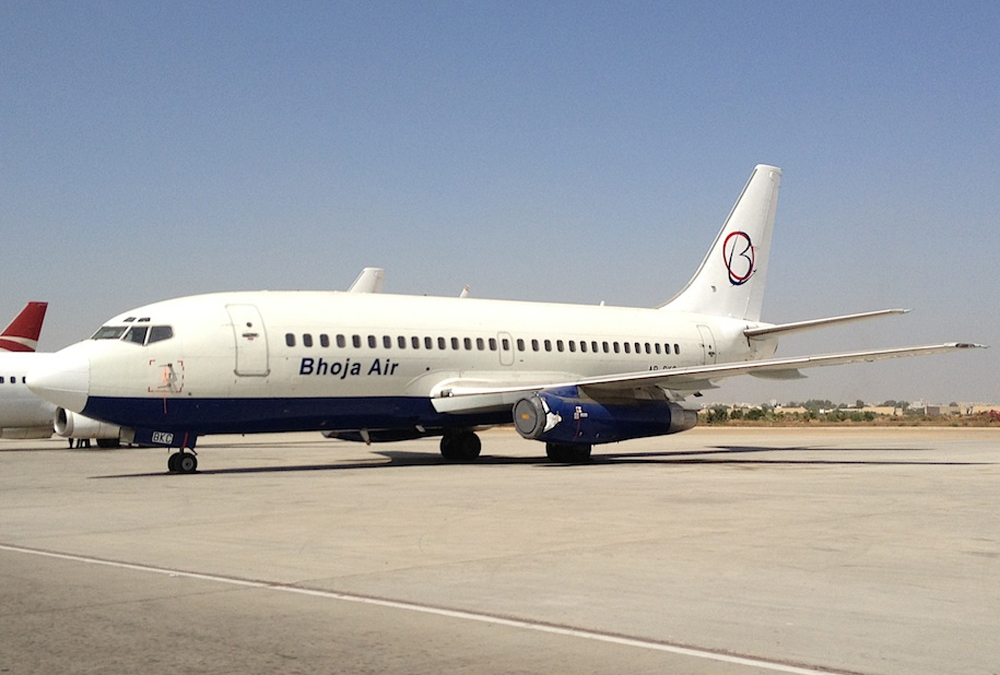
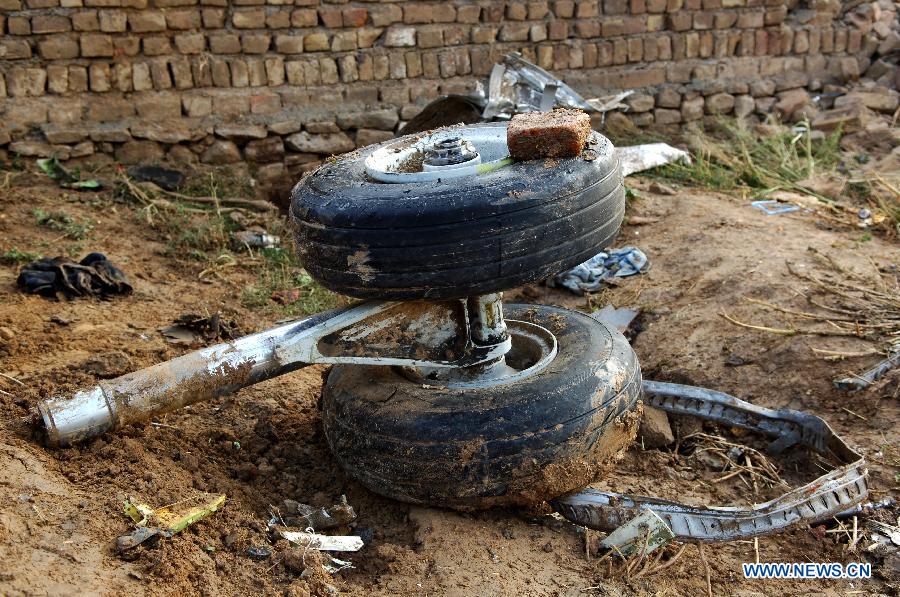
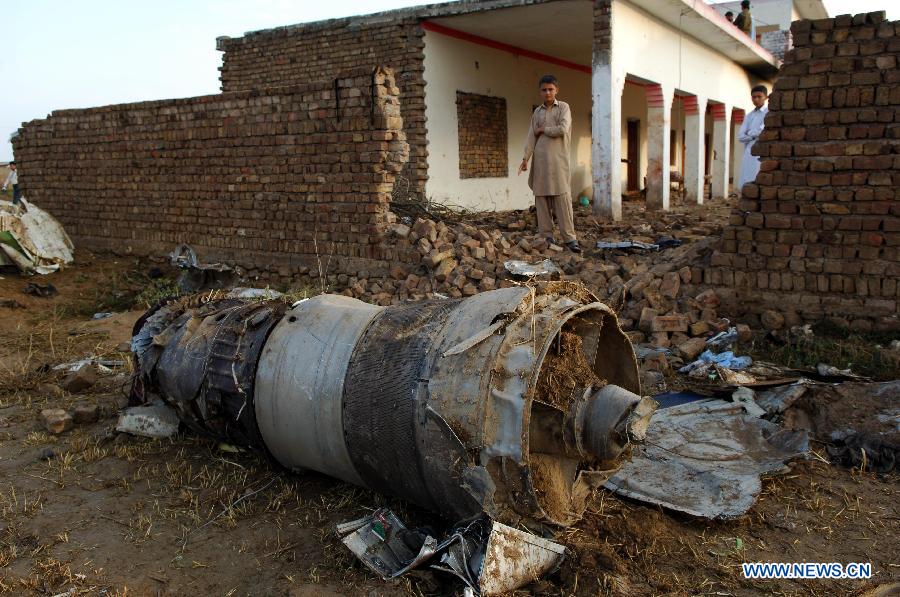
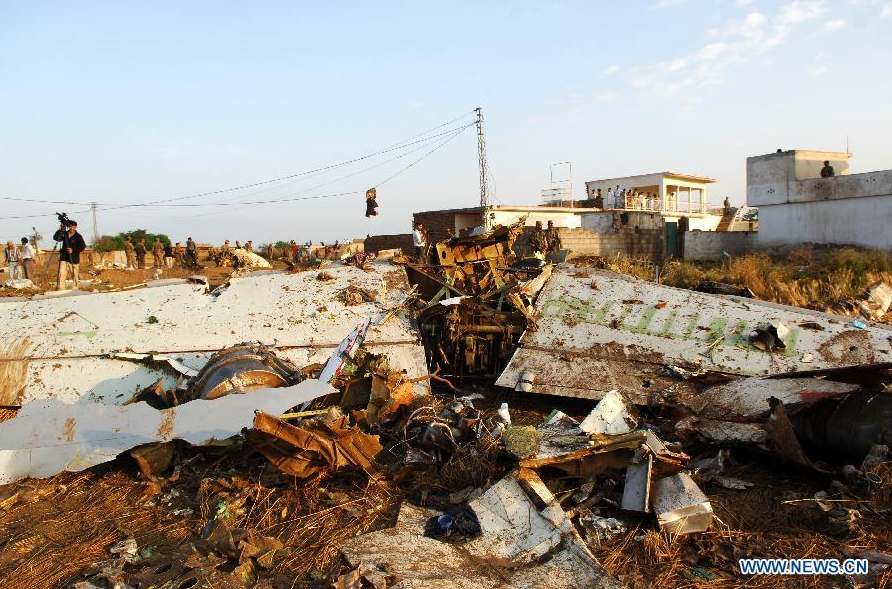
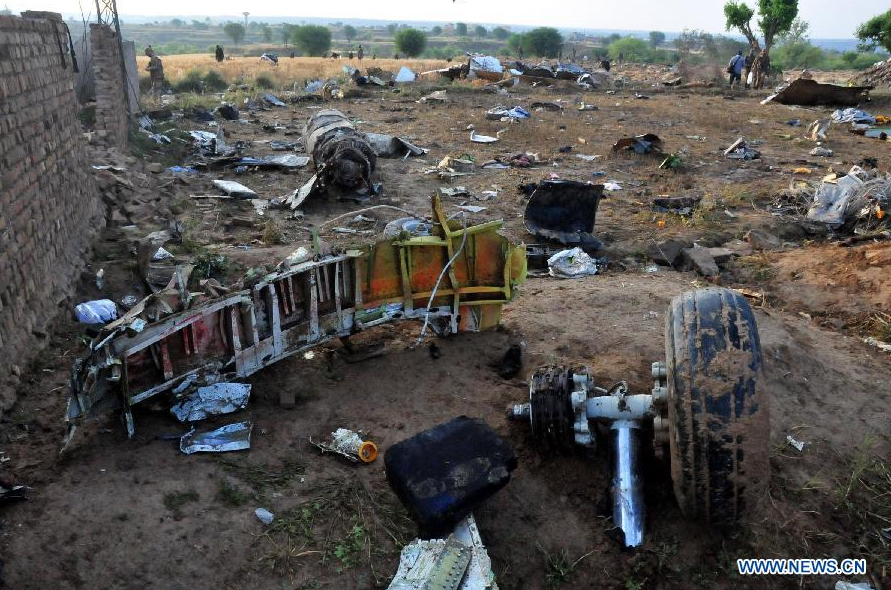
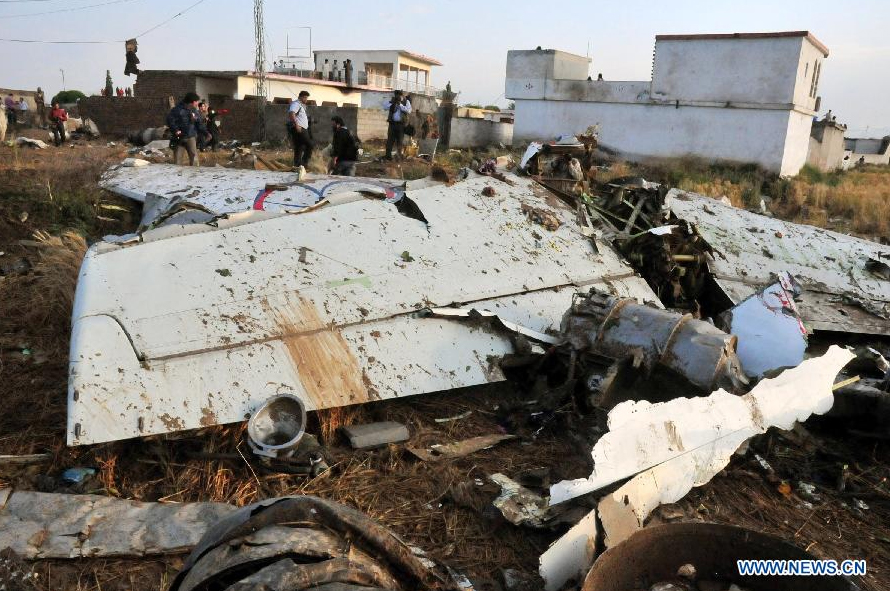
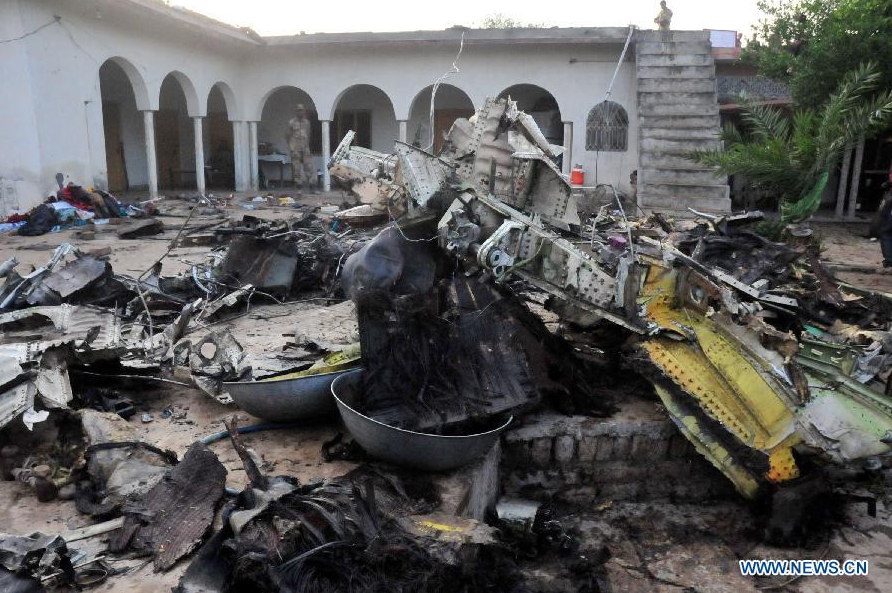
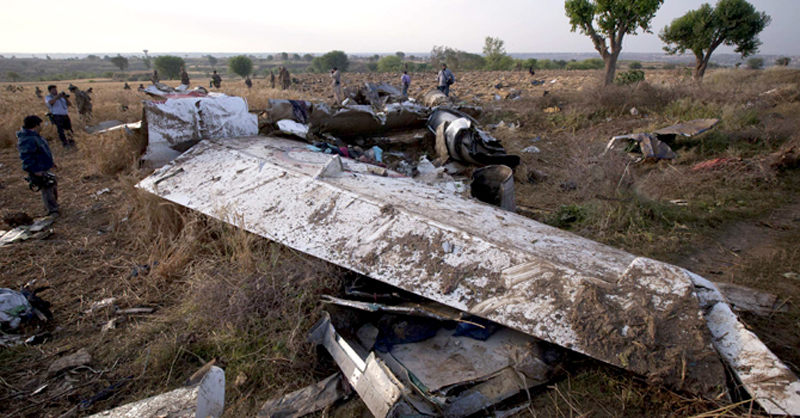
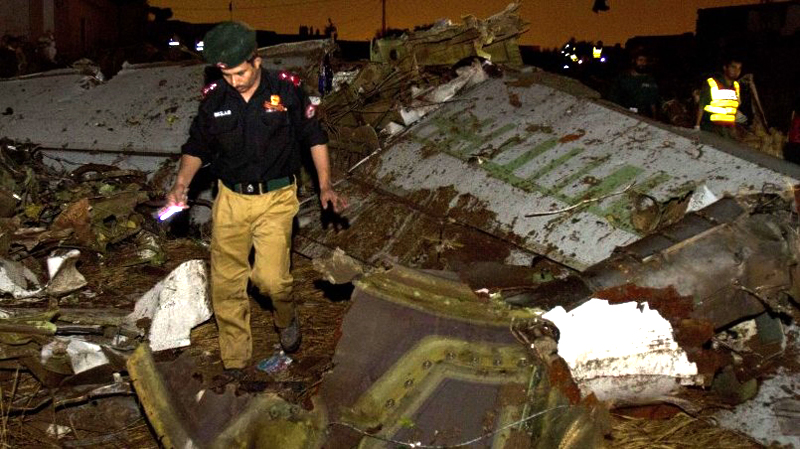
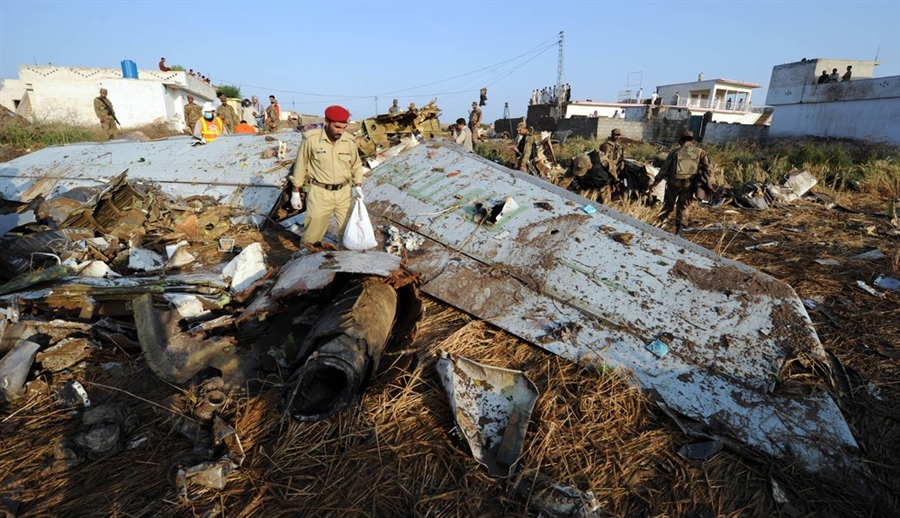
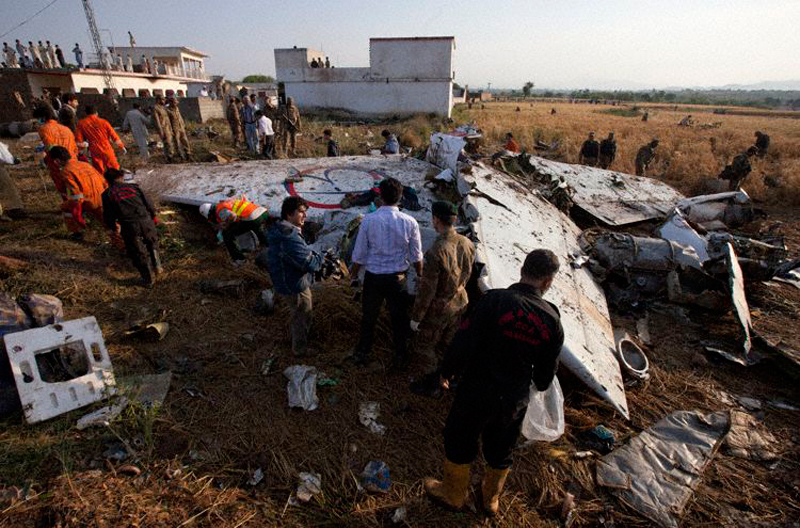
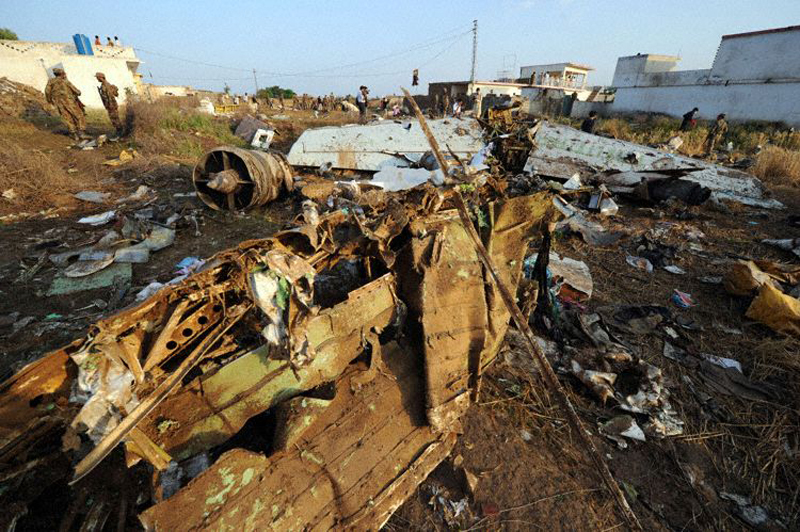
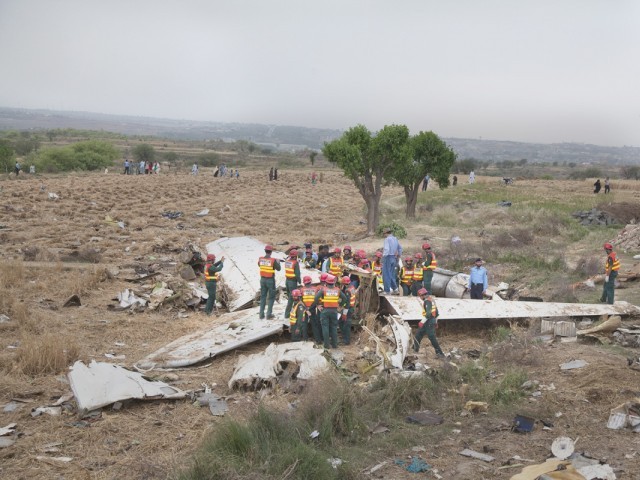
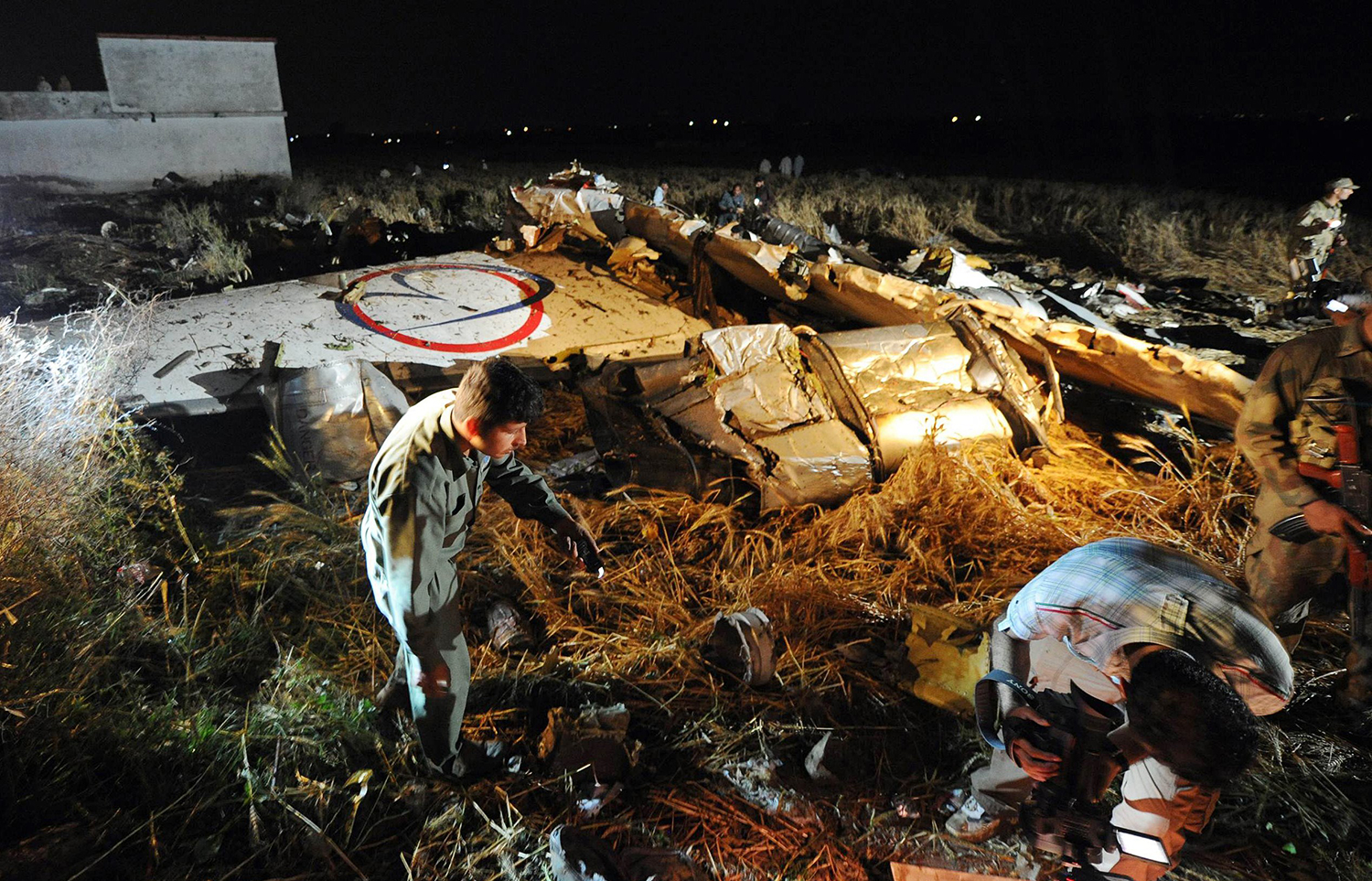
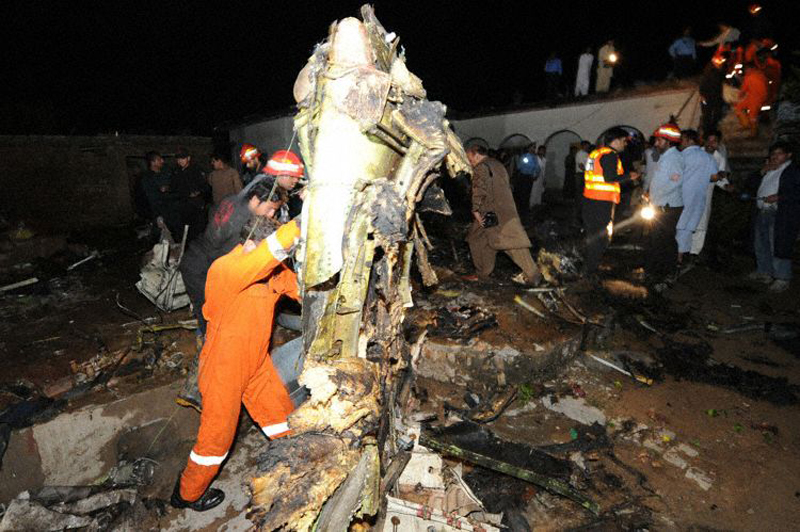
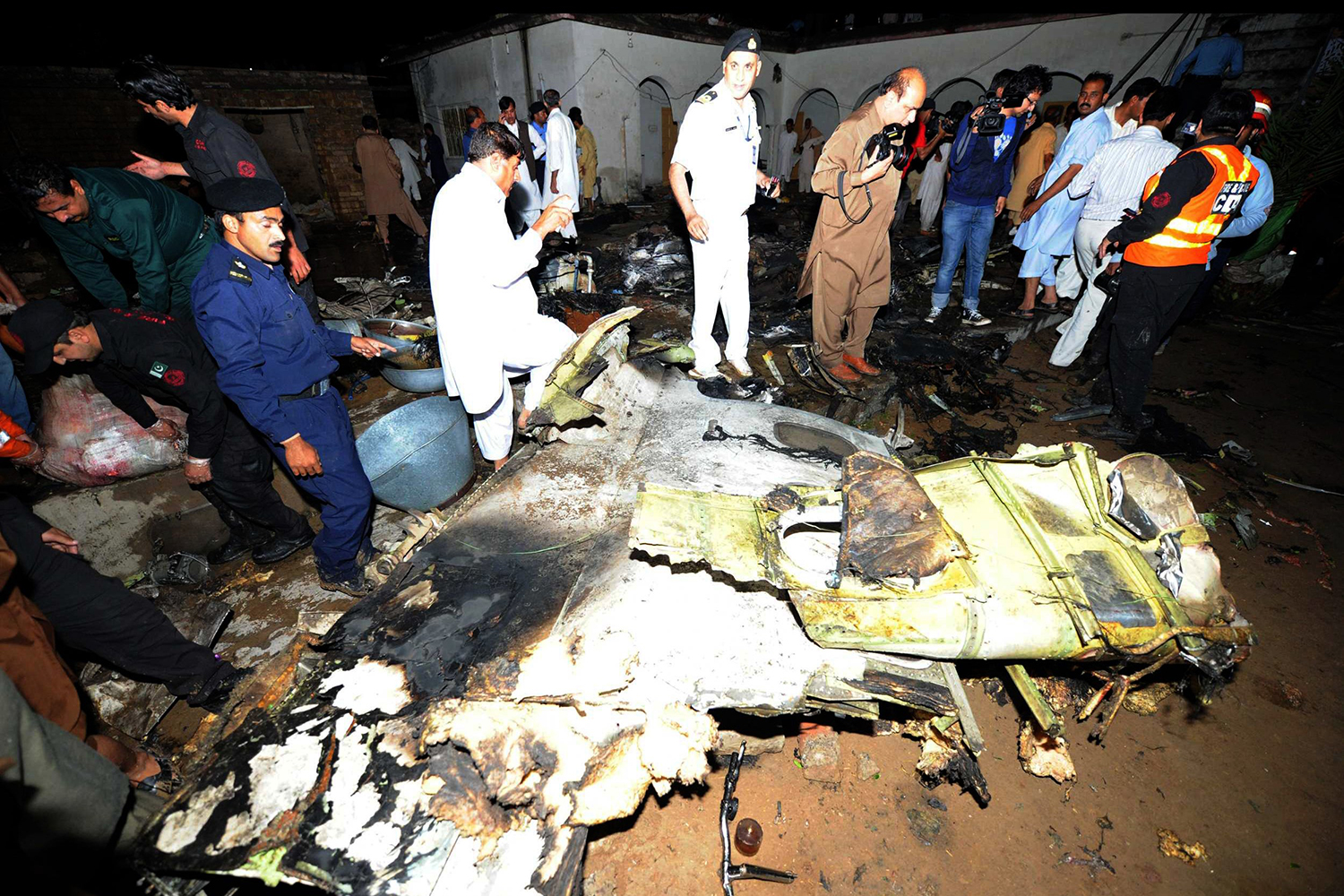
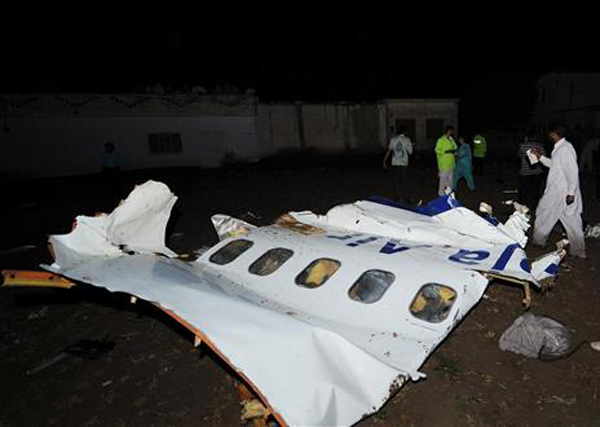
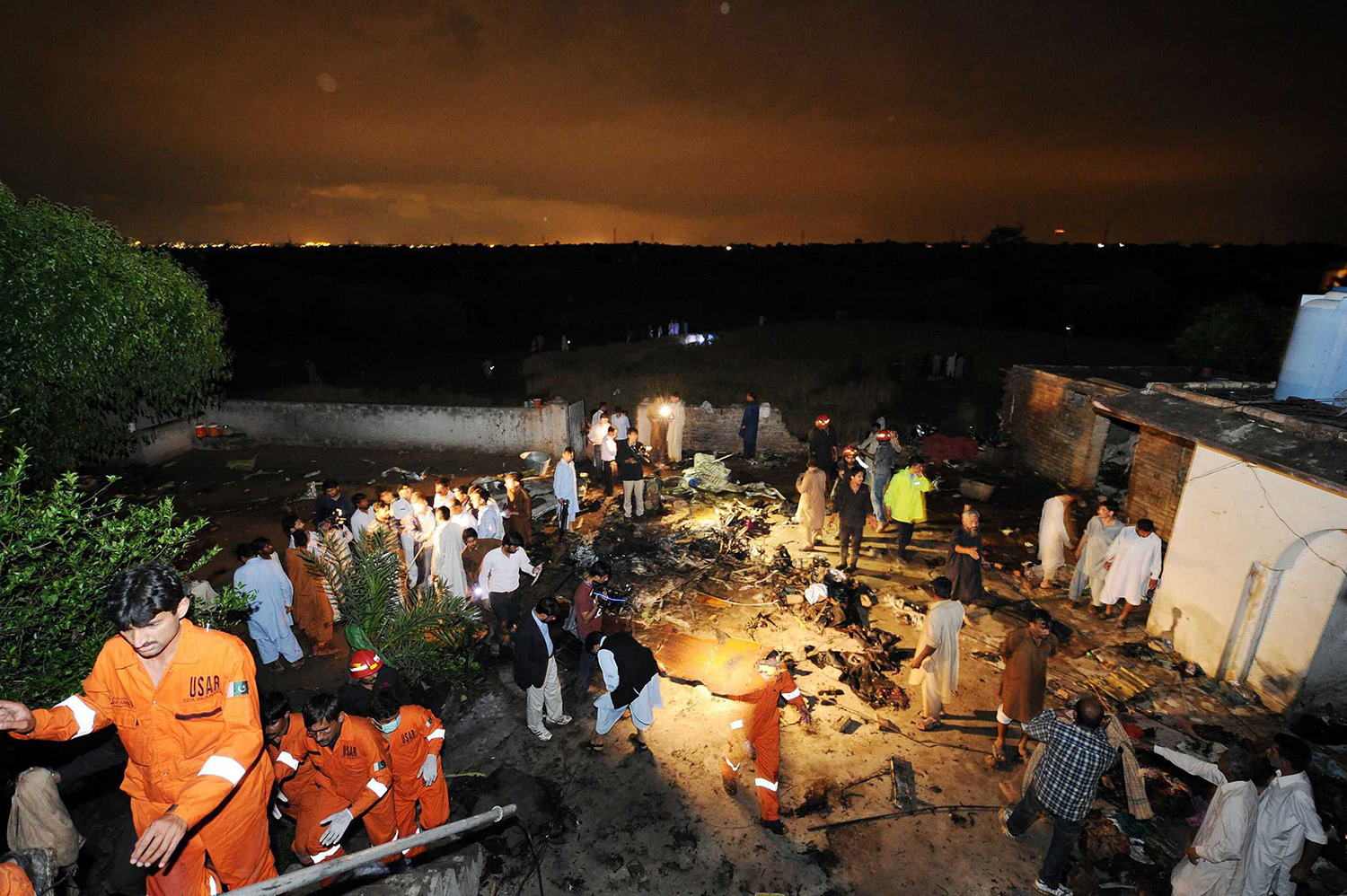
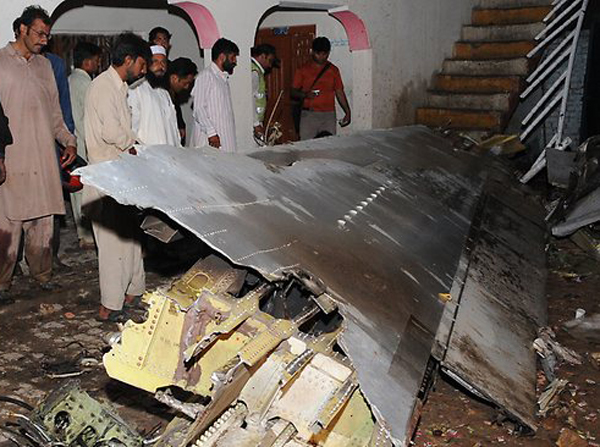
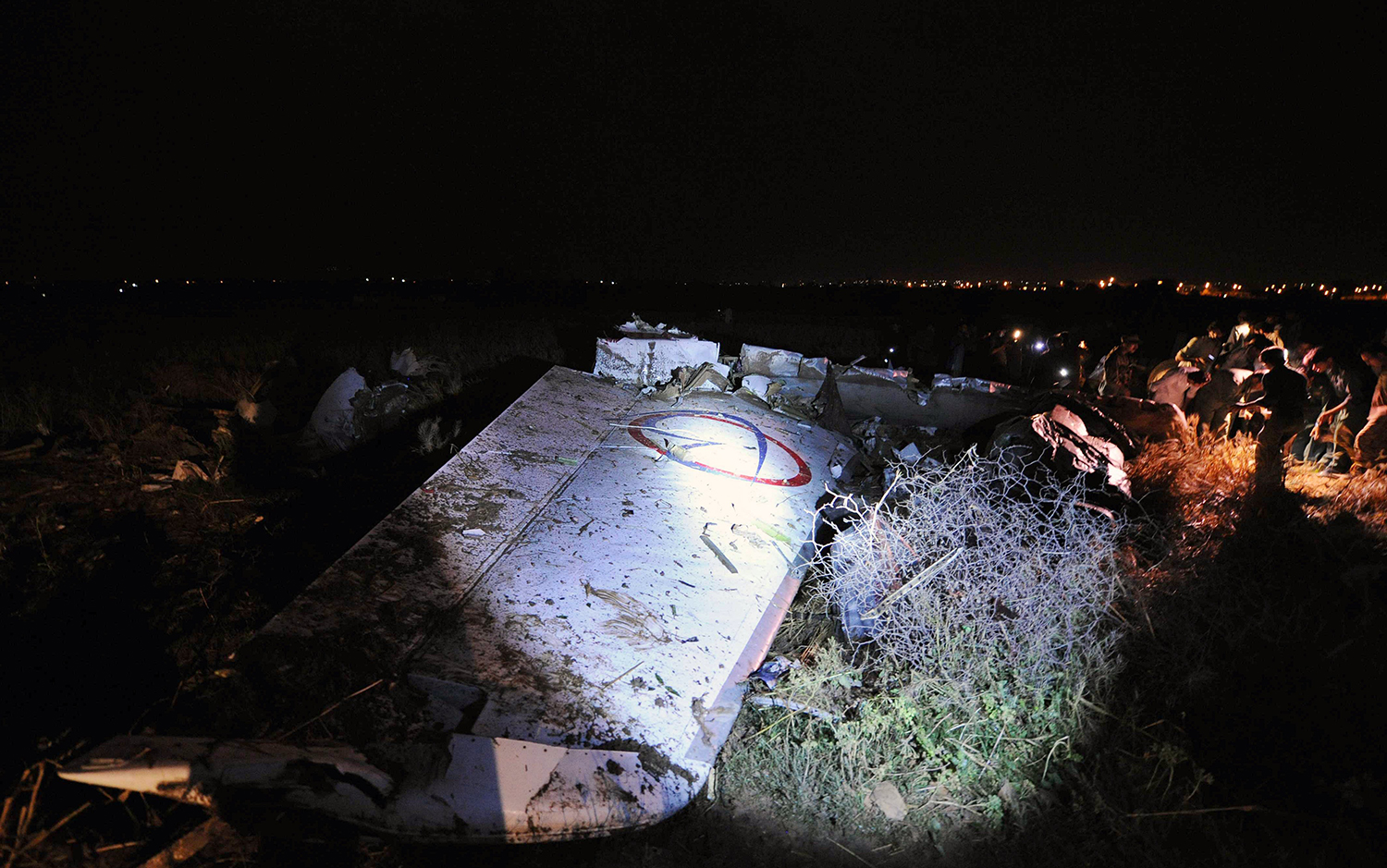
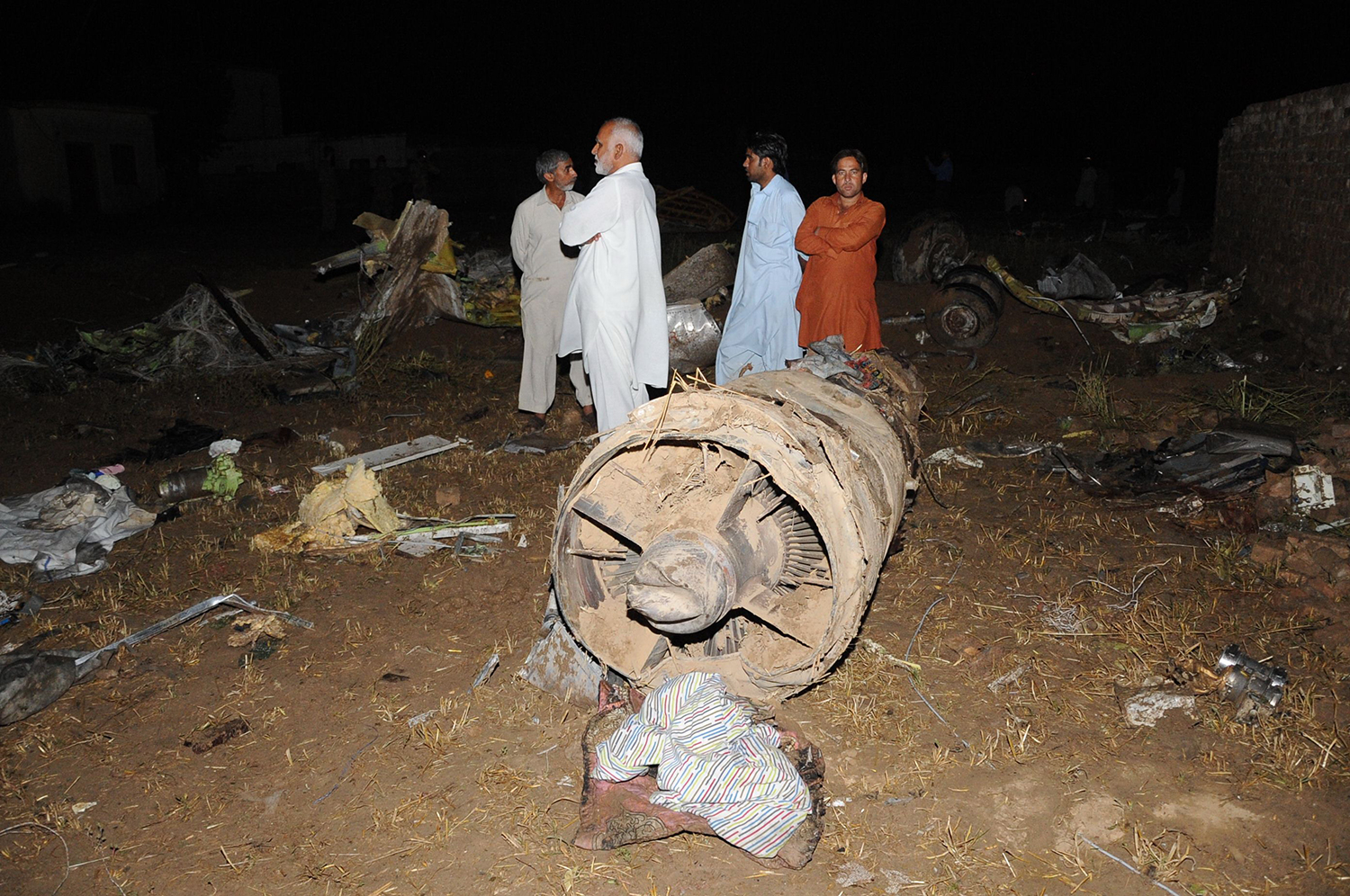
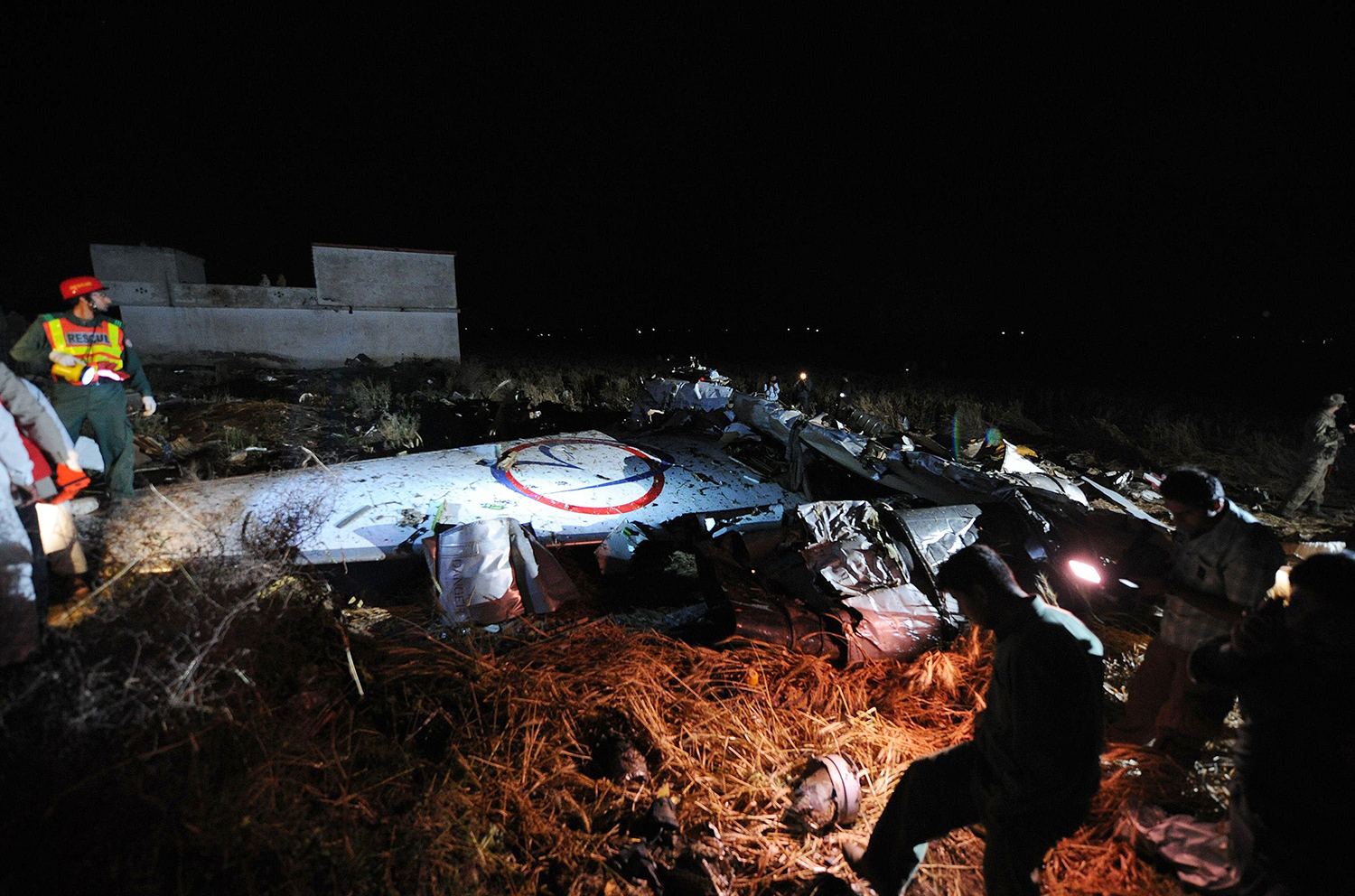
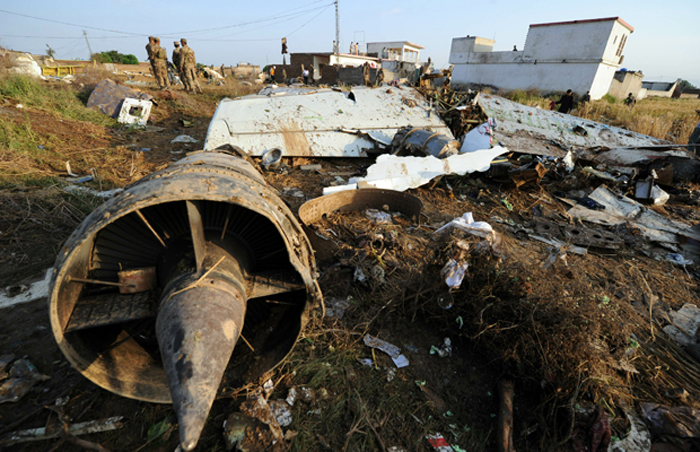

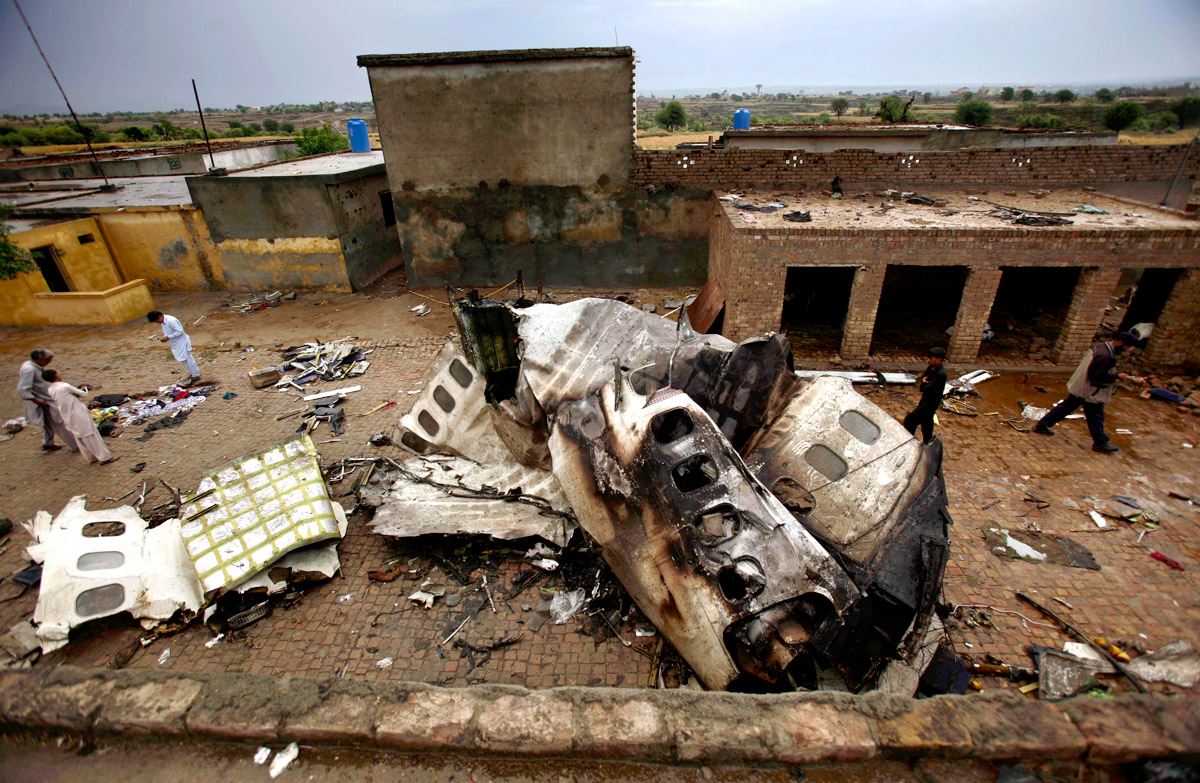
Crash of a Boeing 737-210C in Resolute Bay: 12 killed
Date & Time:
Aug 20, 2011 at 1142 LT
Registration:
C-GNWN
Survivors:
Yes
Schedule:
Yellowknife - Resolute Bay - Grise Fiord
MSN:
21067/414
YOM:
1975
Flight number:
FAB6550
Crew on board:
4
Crew fatalities:
Pax on board:
11
Pax fatalities:
Other fatalities:
Total fatalities:
12
Captain / Total hours on type:
5200.00
Copilot / Total hours on type:
103
Aircraft flight hours:
86190
Circumstances:
The First Air Boeing 737-210C combi aircraft departed Yellowknife (CYZF), Northwest Territories, at 1440 as First Air flight 6560 (FAB6560) on a charter flight to Resolute Bay (CYRB), Nunavut, with 11 passengers, 4 crew members, and freight on board. The instrument flight rules (IFR) flight from CYZF was flight-planned to take 2 hours and 05 minutes at 426 knots true airspeed and a cruise altitude of flight level (FL) 310. Air traffic control (ATC) cleared FAB6560 to destination via the flight-planned route: CYZF direct to the BOTER intersection, then direct to the Cambridge Bay (CB) non-directional beacon (NDB), then direct to 72° N, 100°45' W, and then direct to CYRB (Figure 1). The planned alternate airport was Hall Beach (CYUX), Nunavut. The estimated time of arrival (ETA) at CYRB was 1645. The captain occupied the left seat and was designated as the pilot flying (PF). The first officer (FO) occupied the right seat and was designated as the pilot not flying (PNF). Before departure, First Air dispatch provided the crew with an operational flight plan (OFP) that included forecast and observed weather information for CYZF, CYRB, and CYUX, as well as NOTAM (notice to airmen) information. Radar data show that FAB6560 entered the Northern Domestic Airspace (NDA) 50 nautical miles (nm) northeast of CYZF, approximately at RIBUN waypoint (63°11.4' N, 113°32.9' W) at 1450. During the climb and after leveling at FL310, the crew received CYRB weather updates from a company dispatcher (Appendix A). The crew and dispatcher discussed deteriorating weather conditions at CYRB and whether the flight should return to CYZF, proceed to the alternate CYUX, or continue to CYRB. The crew and dispatcher jointly agreed that the flight would continue to CYRB. At 1616, the crew programmed the global positioning systems (GPS) to proceed from their current en-route position direct to the MUSAT intermediate waypoint on the RNAV (GNSS) Runway (RWY) 35 TRUE approach at CYRB (Appendix B), which had previously been loaded into the GPS units by the crew. The crew were planning to transition to an ILS/DME RWY 35 TRUE approach (Appendix C) via the MUSAT waypoint. A temporary military terminal control area (MTCA) had been planned, in order to support an increase in air traffic at CYRB resulting from a military exercise, Operation NANOOK. A military terminal control unit at CYRB was to handle airspace from 700 feet above ground level (agl) up to FL200 within 80 nm of CYRB. Commencing at 1622:16, the FO made 3 transmissions before establishing contact with the NAV CANADA Edmonton Area Control Centre (ACC) controller. At 1623:29, the NAV CANADA Edmonton ACC controller cleared FAB6560 to descend out of controlled airspace and to advise when leaving FL270. The crew were also advised to anticipate calling the CYRB terminal control unit after leaving FL270, and that there would be a layer of uncontrolled airspace between FL270 and FL200. The FO acknowledged the information. FAB6560 commenced descent from FL310 at 1623:40 at 101 nm from CYRB. The crew initiated the pre-descent checklist at 1624 and completed it at 1625. At 1626, the crew advised the NAV CANADA Edmonton ACC controller that they were leaving FL260. At 1627:09, the FO subsequently called the CYRB terminal controller and provided an ETA of 1643 and communicated intentions to conduct a Runway 35 approach. Radio readability between FAB6560 and the CYRB terminal controller was poor, and the CYRB terminal controller advised the crew to try again when a few miles closer. At 1629, the crew contacted the First Air agent at CYRB on the company frequency. The crew advised the agent of their estimated arrival time and fuel request. The crew then contacted the CYRB terminal controller again, and were advised that communications were now better. The CYRB terminal controller advised that the MTCA was not yet operational, and provided the altimeter setting and traffic information for another inbound flight. The CYRB terminal controller then instructed the crew to contact the CYRB tower controller at their discretion. The FO acknowledged the traffic and the instruction to contact CYRB tower. At 1631, the crew contacted the CYRB tower controller, who advised them of the altimeter setting (29.81 inches of mercury [in. Hg]) and winds (estimated 160° true [T] at 10 knots), and instructed them to report 10 nm final for Runway 35T. The crew asked the tower controller for a runway condition report, and was advised that the runway was a little wet and that no aircraft had used it during the morning. The FO acknowledged this information. The crew initiated the in-range checklist at 1632 and completed it at 1637. At 1637, they began configuring the aircraft for approach and landing, and initiated the landing checklist. At 1638:21, FAB6560 commenced a left turn just before reaching MUSAT waypoint. At the time of the turn, the aircraft was about 600 feet above the ILS glideslope at 184 knots indicated airspeed (KIAS). The track from MUSAT waypoint to the threshold of Runway 35T is 347°T, which coincides with the localizer track for the ILS/DME RWY 35 TRUE approach. After rolling out of the left turn, FAB6560 proceeded on a track of approximately 350°T. At 1638:32, the crew reported 10 nm final for Runway 35T. The captain called for the gear to be lowered at 1638:38 and for flaps 15 at 1638:42. Airspeed at the time of both of these calls was 177 KIAS. At 1638:39, the CYRB tower controller acknowledged the crew’s report and instructed them to report 3 nm final. At 1638:46, the FO requested that the tower repeat the last transmission. At 1638:49, the tower repeated the request to call 3 nm final; the FO acknowledged the call. At this point in the approach, the crew had a lengthy discussion about aircraft navigation. At 1640:36, FAB6560 descended through 1000 feet above field elevation. Between 1640:41 and 1641:11, the captain issued instructions to complete the configuration for landing, and the FO made several statements regarding aircraft navigation and corrective action. At 1641:30, the crew reported 3 nm final for Runway 35T. The CYRB tower controller advised that the wind was now estimated to be 150°T at 7 knots, cleared FAB6560 to land Runway 35T, and added the term “check gear down” as required by the NAV CANADA Air Traffic Control Manual of Operations (ATC MANOPS) Canadian Forces Supplement (CF ATC Sup) Article 344.3. FAB6560’s response to the tower (1641:39) was cut off, and the tower requested the crew to say again. There was no further communication with the flight. The tower controller did not have visual contact with FAB6560 at any time. At 1641:51.8, as the crew were initiating a go-around, FAB6560 collided with terrain about 1 nm east of the midpoint of the CYRB runway. The accident occurred during daylight hours and was located at 74°42'57.3" N, 94°55'4.0" W, at 396 feet above mean sea level. The 4 crew members and 8 passengers were fatally injured. Three passengers survived the accident and were rescued from the site by Canadian military personnel, who were in CYRB participating in Operation NANOOK. The survivors were subsequently evacuated from CYRB on a Canadian Forces CC-177 aircraft.
Probable cause:
Findings as to causes and contributing factors:
1. The late initiation and subsequent management of the descent resulted in the aircraft turning onto final approach 600 feet above the glideslope, increasing the crew’s workload and reducing their capacity to assess and resolve the navigational issues during the remainder of the approach.
2. When the heading reference from the compass systems was set during initial descent, there was an error of −8°. For undetermined reasons, further compass drift during the arrival and approach resulted in compass errors of at least −17° on final approach.
3. As the aircraft rolled out of the turn onto final approach to the right of the localizer, the captain likely made a control wheel roll input that caused the autopilot to revert from VOR/LOC capture to MAN and HDG HOLD mode. The mode change was not detected by the crew.
4. On rolling out of the turn, the captain’s horizontal situation indicator displayed a heading of 330°, providing a perceived initial intercept angle of 17° to the inbound localizer track of 347°. However, due to the compass error, the aircraft’s true heading was 346°. With 3° of wind drift to the right, the aircraft diverged further right of the localizer.
5. The crew’s workload increased as they attempted to understand and resolve the ambiguity of the track divergence, which was incongruent with the perceived intercept angle and expected results.
6. Undetected by the pilots, the flight directors likely reverted to AUTO APP intercept mode as the aircraft passed through 2.5° right of the localizer, providing roll guidance to the selected heading (wings-level command) rather than to the localizer (left-turn command).
7. A divergence in mental models degraded the crew’s ability to resolve the navigational issues. The wings-level command on the flight director likely assured the captain that the intercept angle was sufficient to return the aircraft to the selected course; however, the first officer likely put more weight on the positional information of the track bar and GPS.
8. The crew’s attention was devoted to solving the navigational problem, which delayed the configuration of the aircraft for landing. This problem solving was an additional task, not normally associated with this critical phase of flight, which escalated the workload.
9. The first officer indicated to the captain that they had full localizer deflection. In the absence of standard phraseology applicable to his current situation, he had to improvise the go-around suggestion. Although full deflection is an undesired aircraft state requiring a go-around, the captain continued the approach.
10. The crew did not maintain a shared situational awareness. As the approach continued, the pilots did not effectively communicate their respective perception, understanding, and future projection of the aircraft state.
11. Although the company had a policy that required an immediate go-around in the event that an approach was unstable below 1000 feet above field elevation, no go-around was initiated. This policy had not been operationalized with any procedural guidance in the standard operating procedures.
12. The captain did not interpret the first officer’s statement of “3 mile and not configured” as guidance to initiate a go-around. The captain continued the approach and called for additional steps to configure the aircraft.
13. The first officer was task-saturated, and he thus had less time and cognitive capacity to develop and execute a communication strategy that would result in the captain changing his course of action.
14. Due to attentional narrowing and task saturation, the captain likely did not have a high- level overview of the situation. This lack of overview compromised his ability to identify and manage risk.
15. The crew initiated a go-around after the ground proximity warning system “sink rate” alert occurred, but there was insufficient altitude and time to execute the manoeuvre and avoid collision with terrain.
16. The first officer made many attempts to communicate his concerns and suggest a go-around. Outside of the two-communication rule, there was no guidance provided to address a situation in which the pilot flying is responsive but is not changing an unsafe course of action. In the absence of clear policies or procedures allowing a first officer to escalate from an advisory role to taking control, this first officer likely felt inhibited from doing so.
17. The crew’s crew resource management was ineffective. First Air’s initial and recurrent crew resource management training did not provide the crew with sufficient practical strategies to assist with decision making and problem solving, communication, and workload management.
18. Standard operating procedure adaptations on FAB6560 resulted in ineffective crew communication, escalated workload leading to task saturation, and breakdown in shared situational awareness. First Air’s supervisory activities did not detect the standard operating procedure adaptations within the Yellowknife B737 crew base.
Findings as to risk:
1. If standard operating procedures do not include specific guidance regarding where and how the transition from en route to final approach navigation occurs, pilots will adopt non-standard practices, which may introduce a hazard to safe completion of the approach.
2. Adaptations of standard operating procedures can impair shared situational awareness and crew resource management effectiveness.
3. Without policies and procedures clearly authorizing escalation of intervention to the point of taking aircraft control, some first officers may feel inhibited from doing so.
4. If hazardous situations are not reported, they are unlikely to be identified or investigated by a company’s safety management system; consequently, corrective action may not be taken.
5. Current Transport Canada crew resource management training standards and guidance material have not been updated to reflect advances in crew resource management training, and there is no requirement for accreditation of crew resource management facilitators/instructors in Canada. This situation increases the risk that flight crews will not receive effective crew resource management training.
6. If initial crew resource management training does not develop effective crew resource management skills, and if there is inadequate reinforcement of these skills during recurrent training, flight crews may not adequately manage risk on the flight deck.
7. If operators do not take steps to ensure that flight crews routinely apply effective crew resource management practices during flight operations, risk to aviation safety will persist.
8. Transport Canada’s flight data recorder maintenance guidance (CAR Standard 625, Appendix C) does not refer to the current flight recorder maintenance specification, and therefore provides insufficient guidance to ensure the serviceability of flight data recorders. This insufficiency increases the risk that information needed to identify and communicate safety deficiencies will not be available.
9. If aircraft are not equipped with newer-generation terrain awareness and warning systems, there is a risk that a warning will not alert crews in time to avoid terrain.
10. If air carriers do not monitor flight data to identify and correct problems, there is a risk that adaptations of standard operating procedures will not be detected.
11. Unless further action is taken to reduce the incidence of unstable approaches that continue to a landing, the risk of controlled flight into terrain and of approach and landing accidents will persist.
Other findings:
1. It is likely that both pilots switched from GPS to VHF NAV during the final portion of the in-range check before the turn at MUSAT.
2. The flight crew of FAB6560 were not navigating using the YRB VOR or intentionally tracking toward the VOR.
3. There was no interference with the normal functionality of the instrument landing system for Runway 35T at CYRB.
4. Neither the military tower nor the military terminal controller at CYRB had sufficient valid information available to cause them to issue a position advisory to FAB6560.
5. The temporary Class D control zone established by the military at CYRB was operating without any capability to provide instrument flight rules separation.
6. The delay in notification of the joint rescue coordination centre did not delay the emergency response to the crash site.
7. The NOTAMs issued concerning the establishment of the military terminal control area did not succeed in communicating the information needed by the airspace users.
8. The ceiling at the airport at the time of the accident could not be determined. The visibility at the airport at the time of the accident likely did not decrease below approach minimums at any time during the arrival of FAB6560. The cloud layer at the crash site was surface-based less than 200 feet above the airport elevation.
1. The late initiation and subsequent management of the descent resulted in the aircraft turning onto final approach 600 feet above the glideslope, increasing the crew’s workload and reducing their capacity to assess and resolve the navigational issues during the remainder of the approach.
2. When the heading reference from the compass systems was set during initial descent, there was an error of −8°. For undetermined reasons, further compass drift during the arrival and approach resulted in compass errors of at least −17° on final approach.
3. As the aircraft rolled out of the turn onto final approach to the right of the localizer, the captain likely made a control wheel roll input that caused the autopilot to revert from VOR/LOC capture to MAN and HDG HOLD mode. The mode change was not detected by the crew.
4. On rolling out of the turn, the captain’s horizontal situation indicator displayed a heading of 330°, providing a perceived initial intercept angle of 17° to the inbound localizer track of 347°. However, due to the compass error, the aircraft’s true heading was 346°. With 3° of wind drift to the right, the aircraft diverged further right of the localizer.
5. The crew’s workload increased as they attempted to understand and resolve the ambiguity of the track divergence, which was incongruent with the perceived intercept angle and expected results.
6. Undetected by the pilots, the flight directors likely reverted to AUTO APP intercept mode as the aircraft passed through 2.5° right of the localizer, providing roll guidance to the selected heading (wings-level command) rather than to the localizer (left-turn command).
7. A divergence in mental models degraded the crew’s ability to resolve the navigational issues. The wings-level command on the flight director likely assured the captain that the intercept angle was sufficient to return the aircraft to the selected course; however, the first officer likely put more weight on the positional information of the track bar and GPS.
8. The crew’s attention was devoted to solving the navigational problem, which delayed the configuration of the aircraft for landing. This problem solving was an additional task, not normally associated with this critical phase of flight, which escalated the workload.
9. The first officer indicated to the captain that they had full localizer deflection. In the absence of standard phraseology applicable to his current situation, he had to improvise the go-around suggestion. Although full deflection is an undesired aircraft state requiring a go-around, the captain continued the approach.
10. The crew did not maintain a shared situational awareness. As the approach continued, the pilots did not effectively communicate their respective perception, understanding, and future projection of the aircraft state.
11. Although the company had a policy that required an immediate go-around in the event that an approach was unstable below 1000 feet above field elevation, no go-around was initiated. This policy had not been operationalized with any procedural guidance in the standard operating procedures.
12. The captain did not interpret the first officer’s statement of “3 mile and not configured” as guidance to initiate a go-around. The captain continued the approach and called for additional steps to configure the aircraft.
13. The first officer was task-saturated, and he thus had less time and cognitive capacity to develop and execute a communication strategy that would result in the captain changing his course of action.
14. Due to attentional narrowing and task saturation, the captain likely did not have a high- level overview of the situation. This lack of overview compromised his ability to identify and manage risk.
15. The crew initiated a go-around after the ground proximity warning system “sink rate” alert occurred, but there was insufficient altitude and time to execute the manoeuvre and avoid collision with terrain.
16. The first officer made many attempts to communicate his concerns and suggest a go-around. Outside of the two-communication rule, there was no guidance provided to address a situation in which the pilot flying is responsive but is not changing an unsafe course of action. In the absence of clear policies or procedures allowing a first officer to escalate from an advisory role to taking control, this first officer likely felt inhibited from doing so.
17. The crew’s crew resource management was ineffective. First Air’s initial and recurrent crew resource management training did not provide the crew with sufficient practical strategies to assist with decision making and problem solving, communication, and workload management.
18. Standard operating procedure adaptations on FAB6560 resulted in ineffective crew communication, escalated workload leading to task saturation, and breakdown in shared situational awareness. First Air’s supervisory activities did not detect the standard operating procedure adaptations within the Yellowknife B737 crew base.
Findings as to risk:
1. If standard operating procedures do not include specific guidance regarding where and how the transition from en route to final approach navigation occurs, pilots will adopt non-standard practices, which may introduce a hazard to safe completion of the approach.
2. Adaptations of standard operating procedures can impair shared situational awareness and crew resource management effectiveness.
3. Without policies and procedures clearly authorizing escalation of intervention to the point of taking aircraft control, some first officers may feel inhibited from doing so.
4. If hazardous situations are not reported, they are unlikely to be identified or investigated by a company’s safety management system; consequently, corrective action may not be taken.
5. Current Transport Canada crew resource management training standards and guidance material have not been updated to reflect advances in crew resource management training, and there is no requirement for accreditation of crew resource management facilitators/instructors in Canada. This situation increases the risk that flight crews will not receive effective crew resource management training.
6. If initial crew resource management training does not develop effective crew resource management skills, and if there is inadequate reinforcement of these skills during recurrent training, flight crews may not adequately manage risk on the flight deck.
7. If operators do not take steps to ensure that flight crews routinely apply effective crew resource management practices during flight operations, risk to aviation safety will persist.
8. Transport Canada’s flight data recorder maintenance guidance (CAR Standard 625, Appendix C) does not refer to the current flight recorder maintenance specification, and therefore provides insufficient guidance to ensure the serviceability of flight data recorders. This insufficiency increases the risk that information needed to identify and communicate safety deficiencies will not be available.
9. If aircraft are not equipped with newer-generation terrain awareness and warning systems, there is a risk that a warning will not alert crews in time to avoid terrain.
10. If air carriers do not monitor flight data to identify and correct problems, there is a risk that adaptations of standard operating procedures will not be detected.
11. Unless further action is taken to reduce the incidence of unstable approaches that continue to a landing, the risk of controlled flight into terrain and of approach and landing accidents will persist.
Other findings:
1. It is likely that both pilots switched from GPS to VHF NAV during the final portion of the in-range check before the turn at MUSAT.
2. The flight crew of FAB6560 were not navigating using the YRB VOR or intentionally tracking toward the VOR.
3. There was no interference with the normal functionality of the instrument landing system for Runway 35T at CYRB.
4. Neither the military tower nor the military terminal controller at CYRB had sufficient valid information available to cause them to issue a position advisory to FAB6560.
5. The temporary Class D control zone established by the military at CYRB was operating without any capability to provide instrument flight rules separation.
6. The delay in notification of the joint rescue coordination centre did not delay the emergency response to the crash site.
7. The NOTAMs issued concerning the establishment of the military terminal control area did not succeed in communicating the information needed by the airspace users.
8. The ceiling at the airport at the time of the accident could not be determined. The visibility at the airport at the time of the accident likely did not decrease below approach minimums at any time during the arrival of FAB6560. The cloud layer at the crash site was surface-based less than 200 feet above the airport elevation.
Final Report:
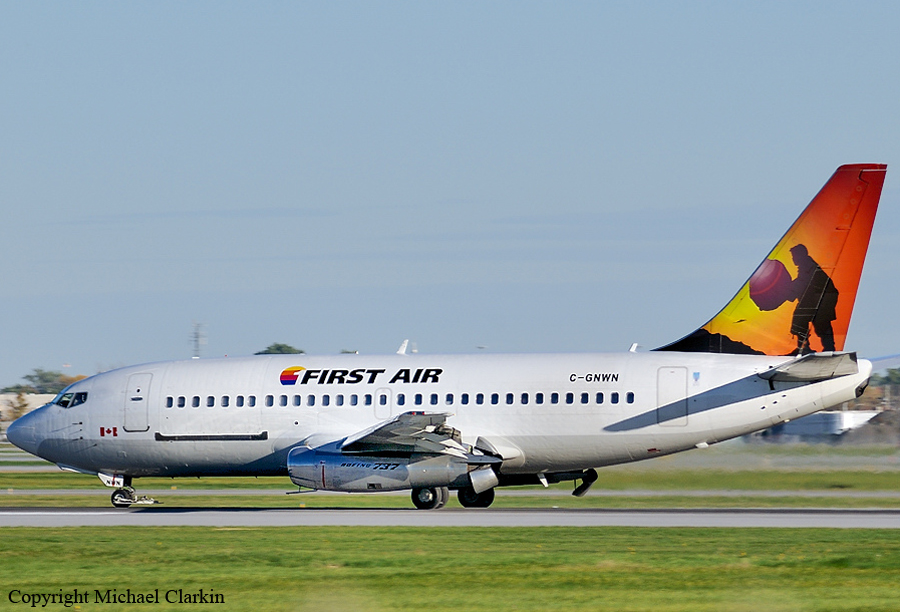
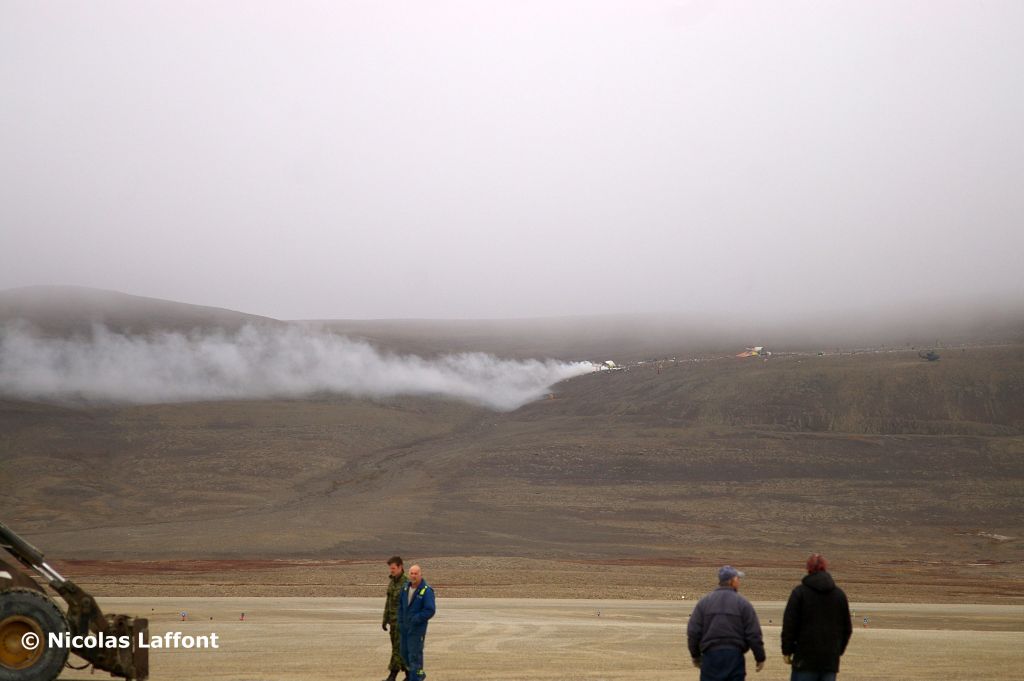
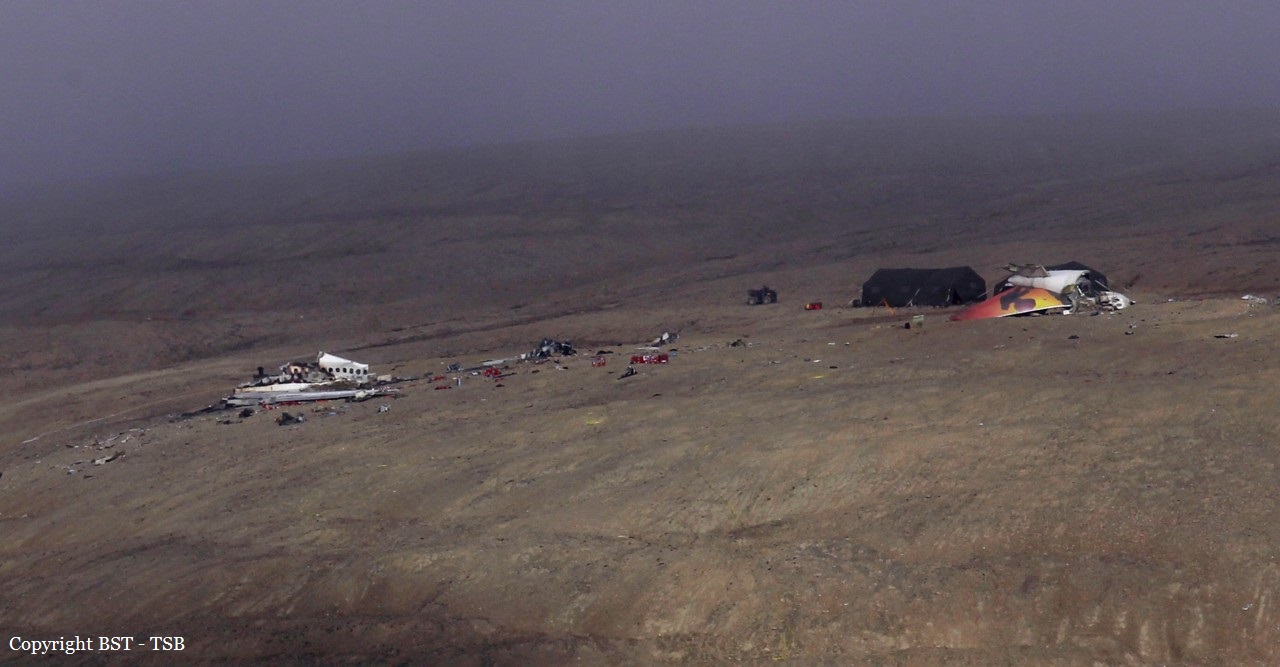
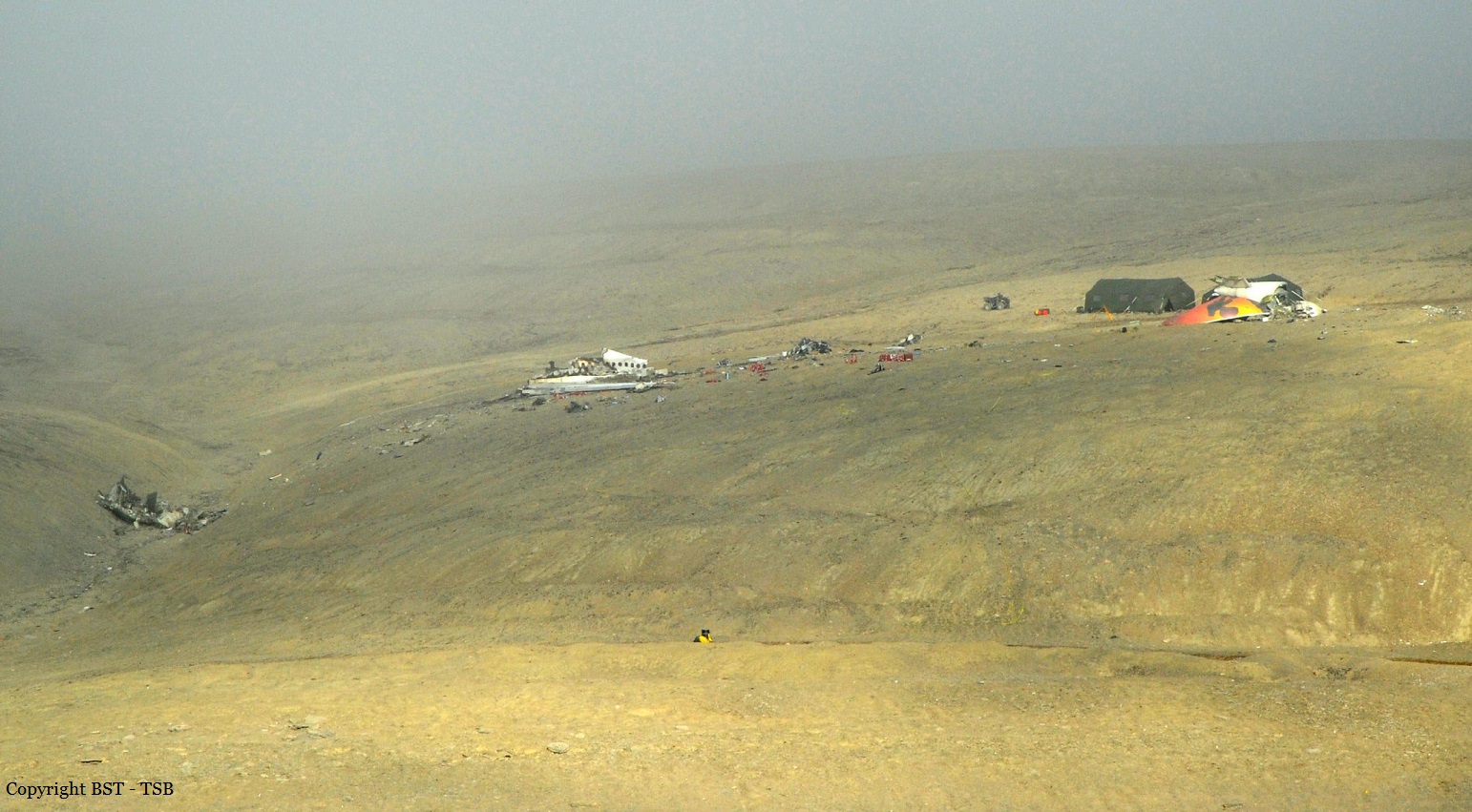
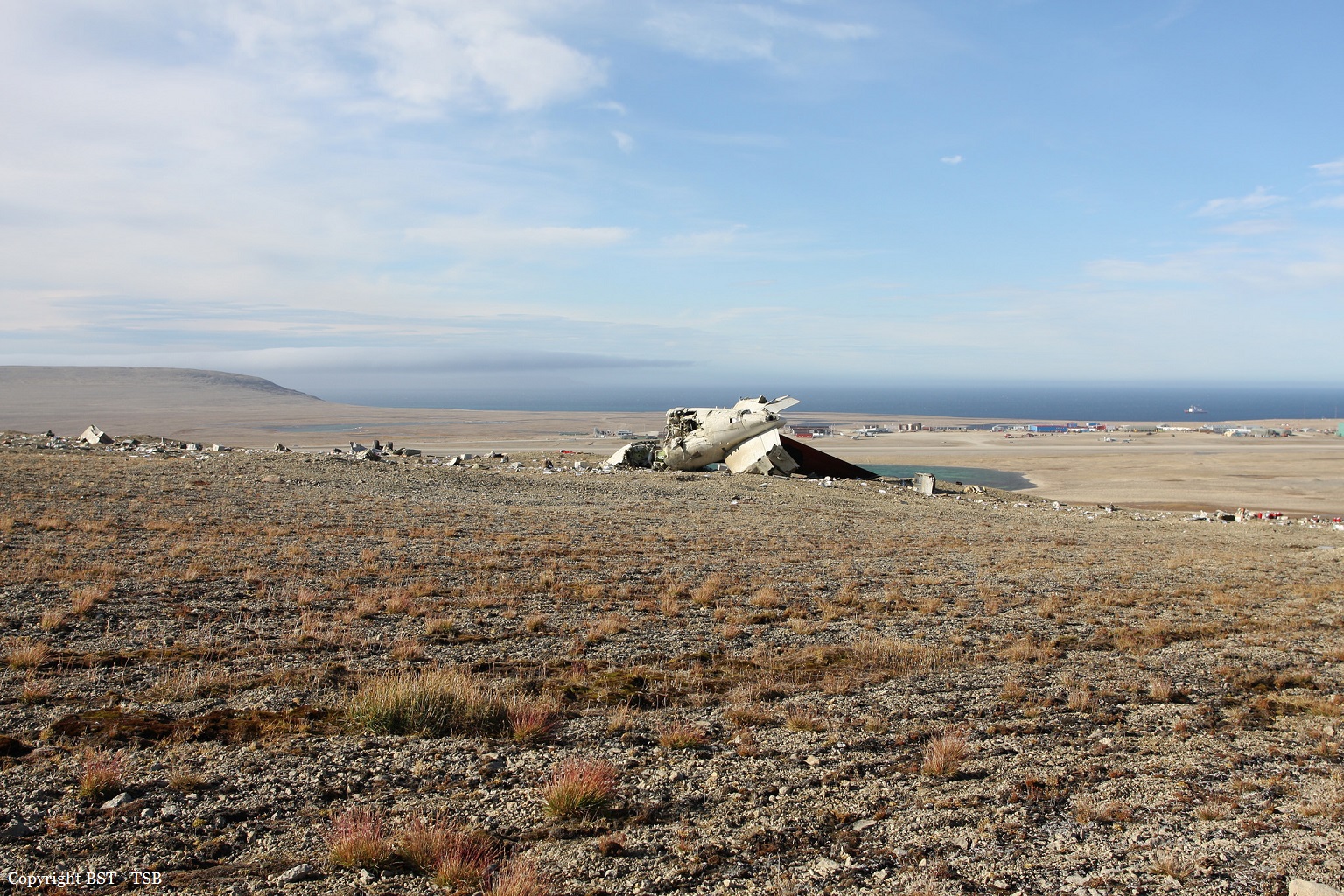
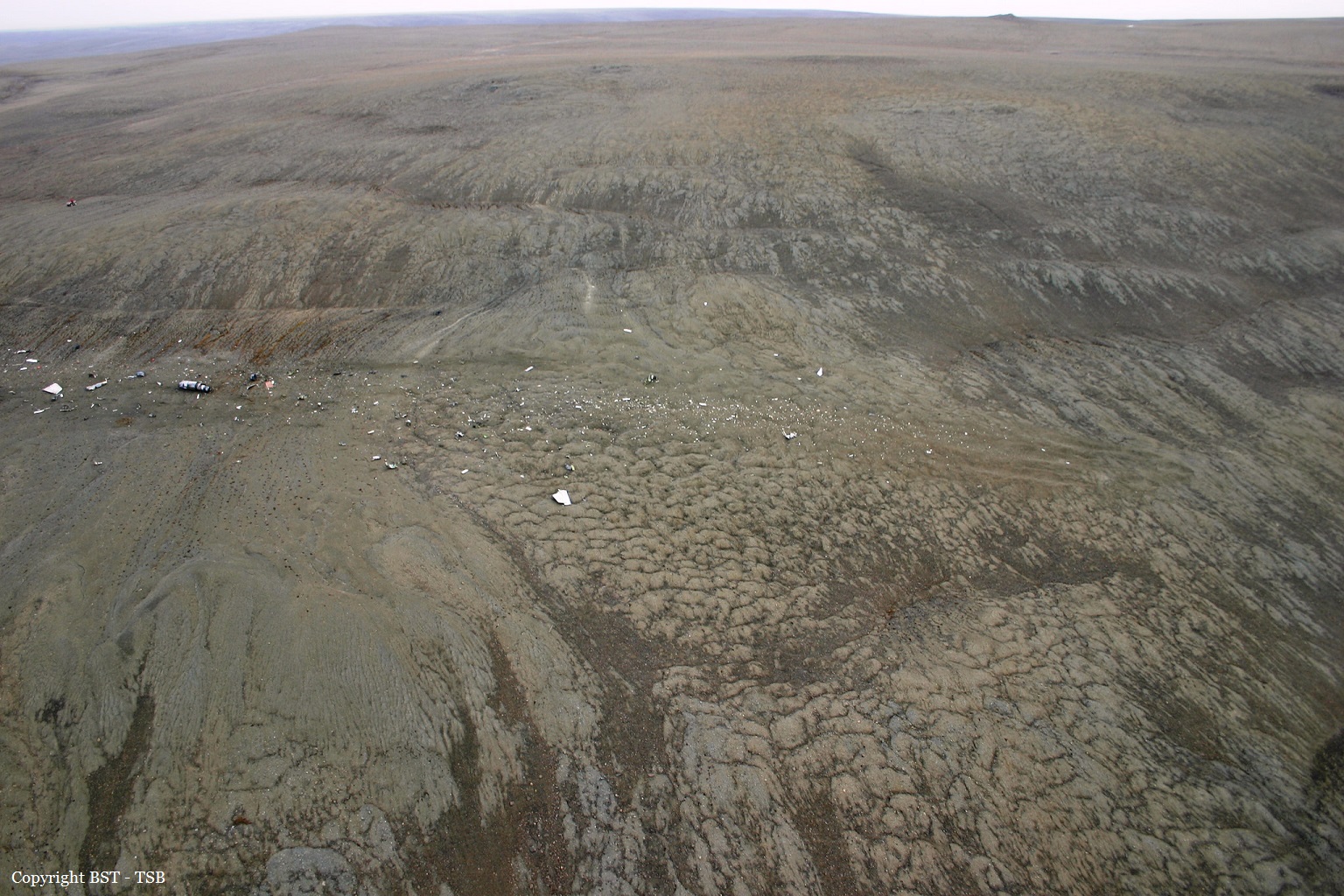
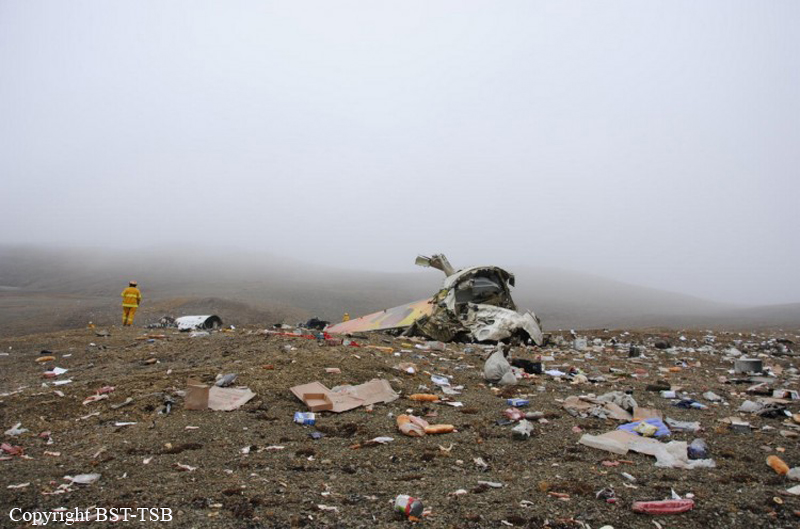
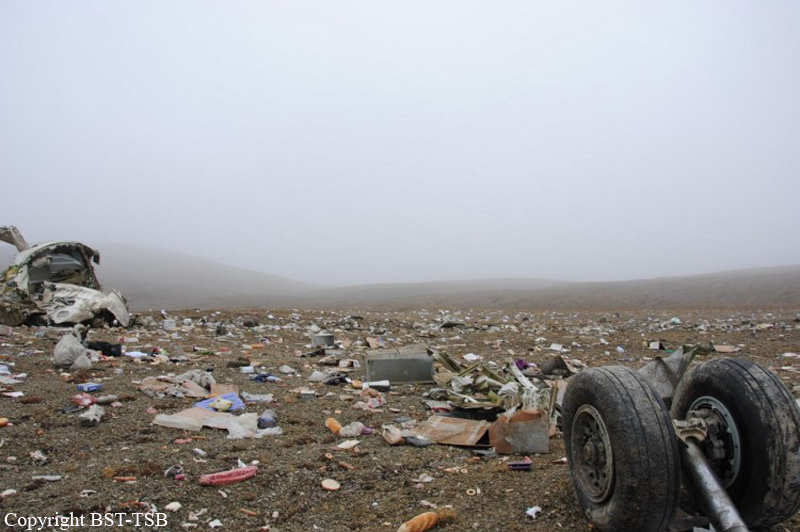
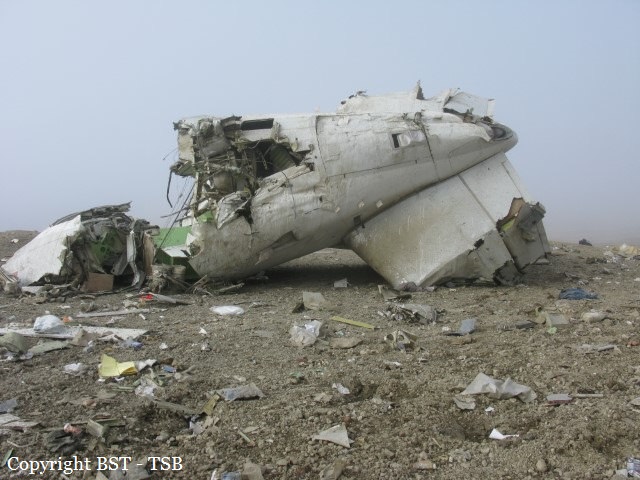
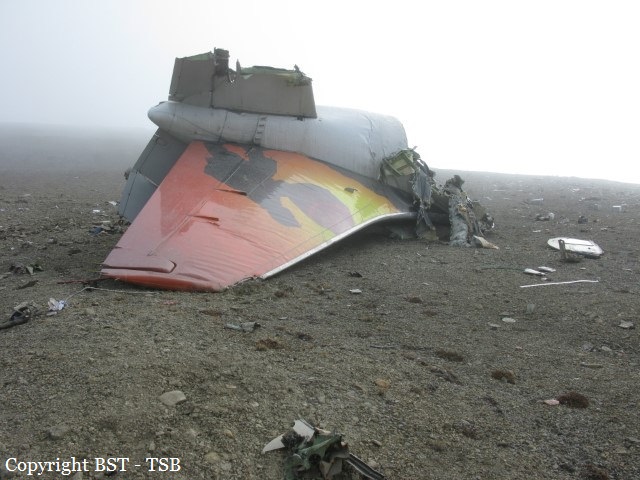
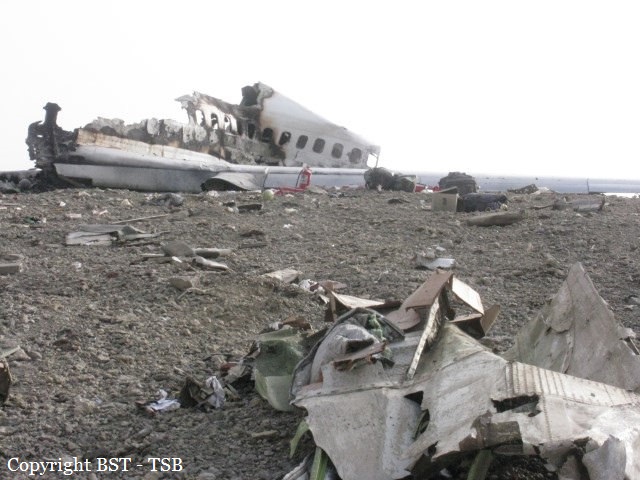

Ground accident of a Boeing 737-2T5 at Hoedspruit AFB
Date & Time:
Jan 10, 2011 at 2050 LT
Registration:
ZS-SGX
Survivors:
Yes
Schedule:
Hoedspruit - Johannesburg
MSN:
22396/730
YOM:
1981
Crew on board:
3
Crew fatalities:
Pax on board:
0
Pax fatalities:
Other fatalities:
Total fatalities:
0
Copilot / Total hours on type:
1100
Aircraft flight hours:
70094
Circumstances:
The aircraft was flown on a non-scheduled charter flight from O. R. Tambo International Airport to Hoedspruit military aerodrome, where it landed safely and all 97 passengers disembarked. The crew then prepared to return to O. R. Tambo International Airport with no passengers on board. Whilst taxiing to the cleared holding point for takeoff, the pilot switched off the landing lights to avoid blinding an approaching aircraft. As a result, he overshot the turning point in the darkness and found himself at the end of the taxiway with insufficient space to turn around. According to him, he decided to manoeuvre the aircraft out of the "dead end" by turning into the last taxiway, which led to military hangars, and then reversing the aircraft to carry out a 180° turn. This was to be done without external guidance. Whilst reversing the aircraft, the pilot failed to stop it in time, the main wheels rolled off the edge of the taxiway and the aircraft slipped down a steep embankment, coming to rest with the nose-wheel still on the taxiway. The aeroplane was substantially damaged, but no-one was injured.
Probable cause:
Inappropriate decision by the captain to reverse the aircraft at night without external guidance.
Final Report:
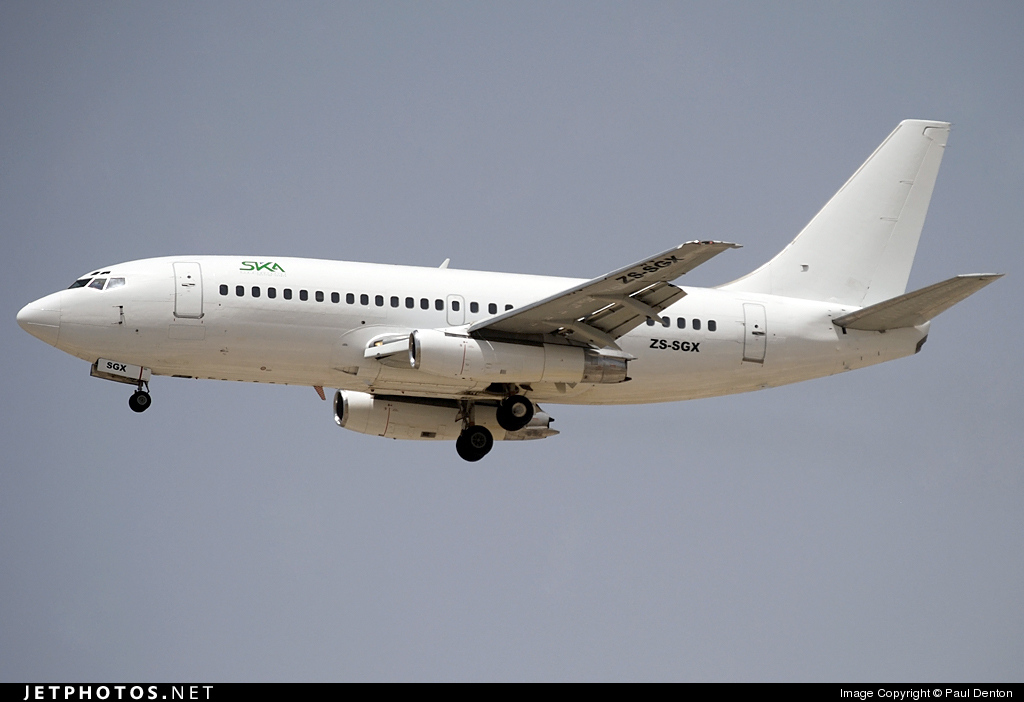
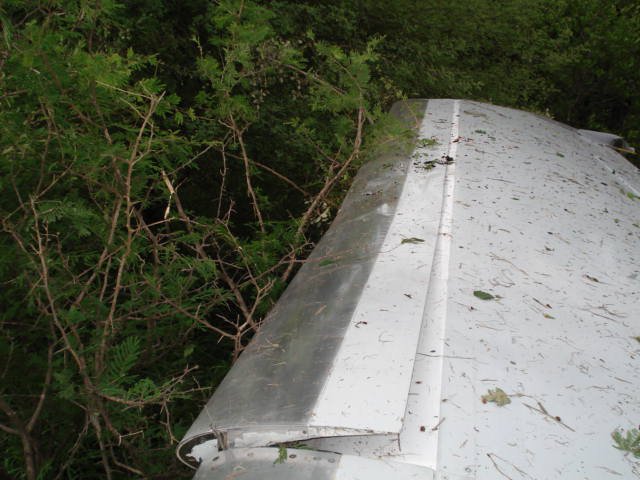
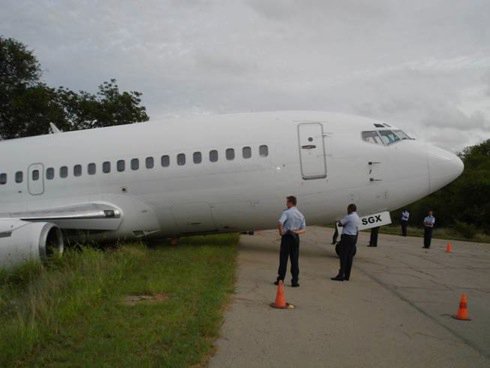
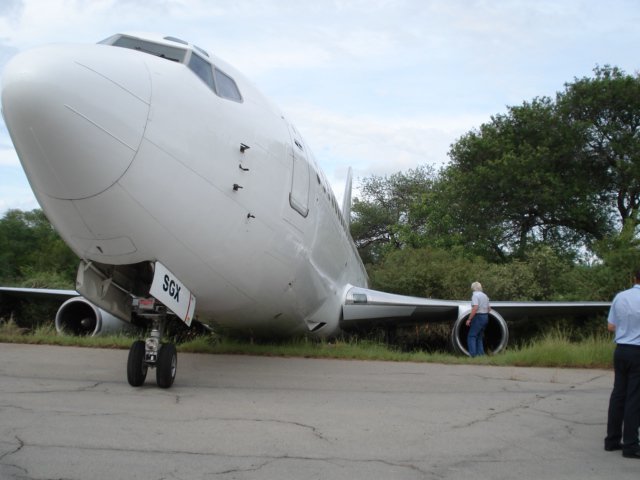
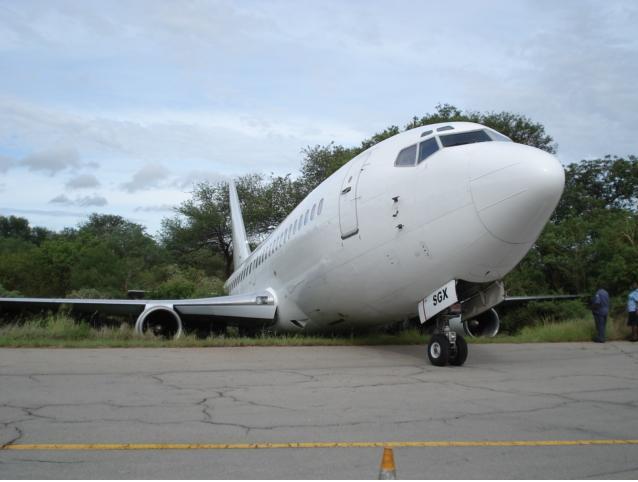
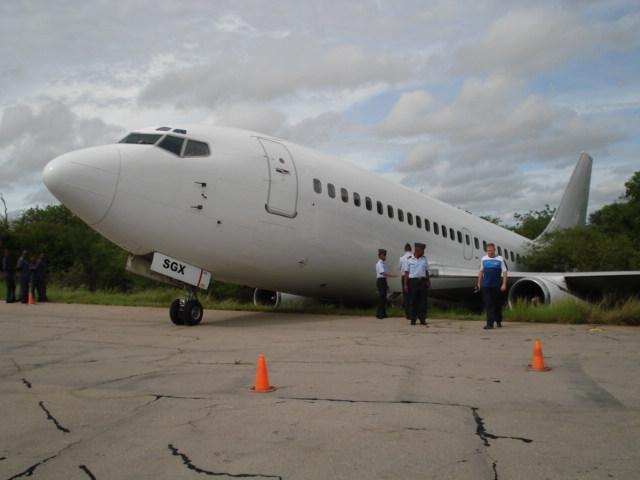
Crash of a Boeing 737-247 in Mwanza
Date & Time:
Mar 1, 2010 at 0745 LT
Registration:
5H-MVZ
Survivors:
Yes
Schedule:
Dar es-Salaam - Mwanza
MSN:
23602/1347
YOM:
1987
Flight number:
ACT100
Crew on board:
4
Crew fatalities:
Pax on board:
76
Pax fatalities:
Other fatalities:
Total fatalities:
0
Circumstances:
After landing at Mwanza Airport, the crew encountered control problems. The aircraft deviated to the left then veered off runway. While contacting soft ground, the nose gear collapsed and the aircraft came to rest near a taxiway. All 80 occupants escaped uninjured while the aircraft was damaged beyond repair.
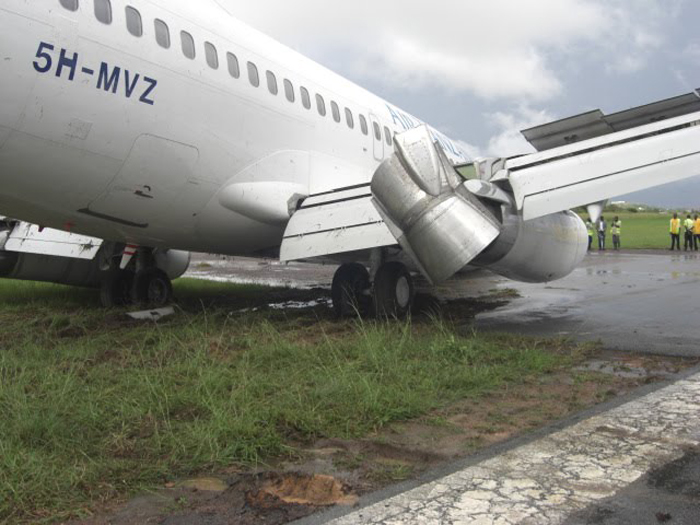
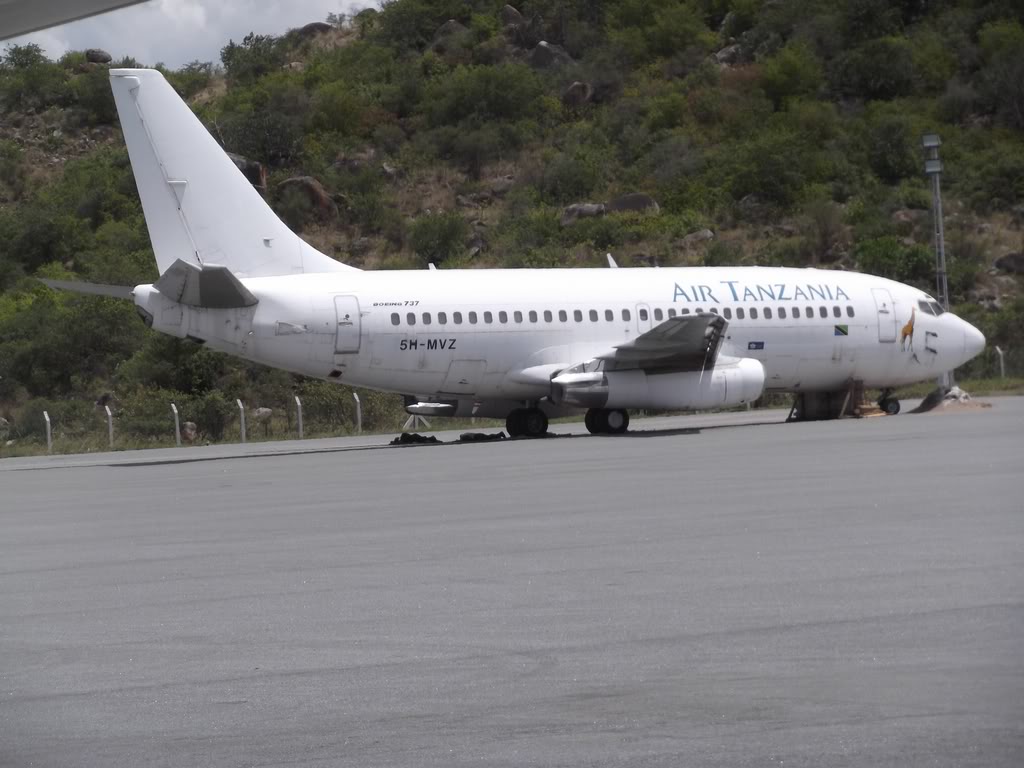
Crash of a Boeing 737-247 in Massamba: 7 killed
Date & Time:
Apr 29, 2009 at 0600 LT
Registration:
TL-ADM
Survivors:
No
Schedule:
Bangui – Brazzaville – Harare
MSN:
22264/753
YOM:
1981
Crew on board:
2
Crew fatalities:
Pax on board:
5
Pax fatalities:
Other fatalities:
Total fatalities:
7
Circumstances:
The aircraft departed Bangui on a ferry flight to Harare with an intermediate stop in Brazzaville, carrying five technicians and two pilots. After being parked at Bangui Airport for almost a year without flying, the aircraft should be transferred to Harare for maintenance purposes. While in cruising altitude over DRC, the aircraft entered an uncontrolled descent and crashed in a dense wooded area near Massamba, Bandundu Province. The aircraft disintegrated on impact and all 7 occupants were killed.
